All reports
Duchenne muscular dystrophy
·
Jan 30, 2025
Understanding Duchenne muscular dystrophy: a guide for patients
Causes, symptoms, progression, treatment options, and support resources
Reports are in beta and continually improving. They are not a substitute for professional medical advice. Please contact us to give feedback.
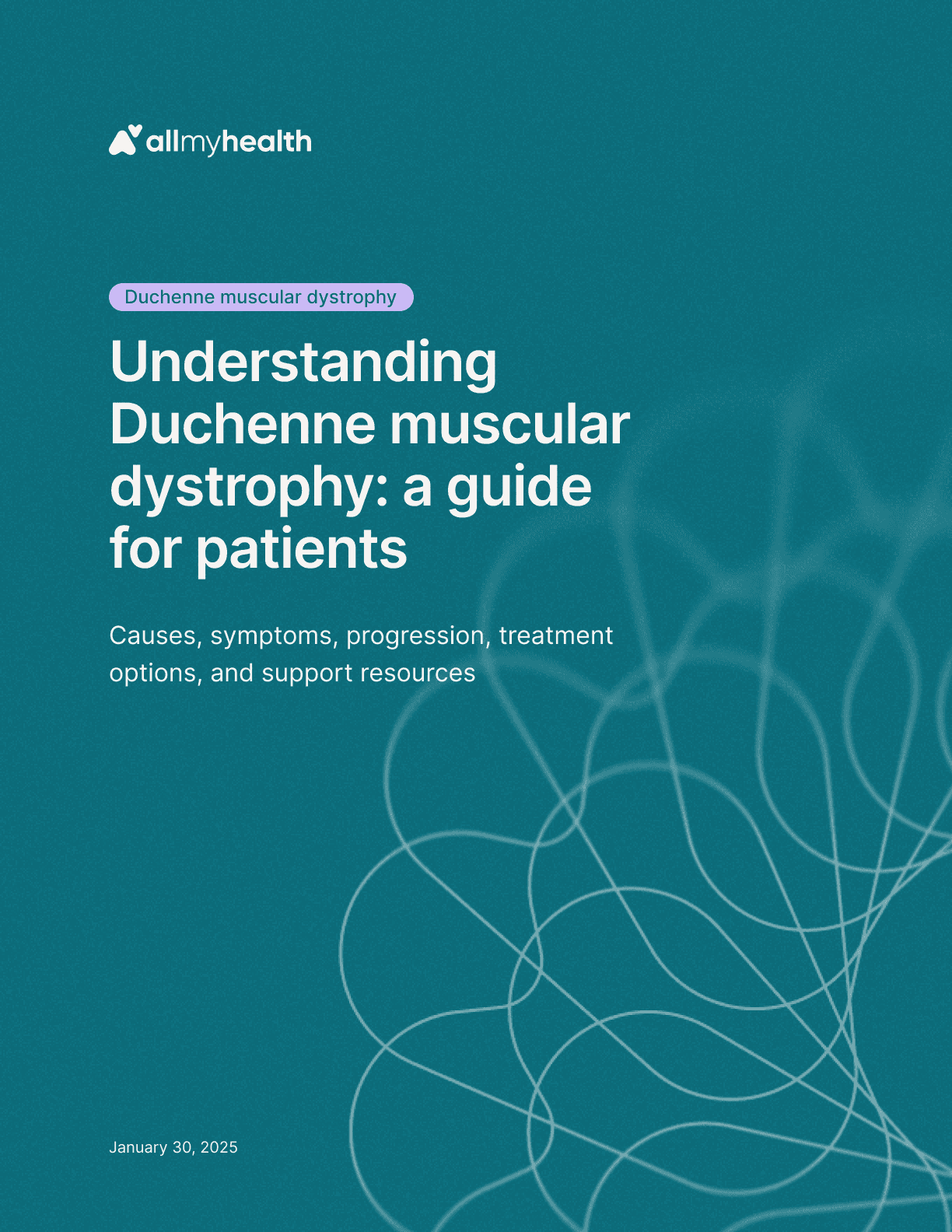
Stay informed
This report was published in our weekly newsletter and on our community page. Follow to stay up to date with the latest news and research relevant to your condition.
Listen to the audio version
Introduction
Duchenne muscular dystrophy (DMD) is a genetic disorder that causes skeletal and heart muscle weakness that worsens over time [1]. This comprehensive guide aims to provide patients and families with a clear understanding of DMD, including explanations of common medical terms, the different stages of the disease, and the potential impact on daily life. It also highlights the importance of seeking support and provides information on current research and potential treatments.
What is Duchenne Muscular Dystrophy?
DMD is caused by a change in the dystrophin gene. This gene is responsible for producing a protein called dystrophin, which helps keep muscle cells intact. The change in the gene prevents the body from producing dystrophin or leads to the production of a non-functional dystrophin protein [2]. Without dystrophin, muscle cells become fragile and easily damaged, leading to progressive muscle weakness and degeneration. DMD is one of four conditions known as dystrophinopathies [2]. DMD primarily affects males, but in rare cases, it can affect females [2].
The disease typically manifests in early childhood, usually between the ages of 2 and 3 [2]. Early signs may include delays in developmental milestones such as sitting, walking, and talking [3]. Muscle weakness is often first noticed in the hips, thighs, shoulders, and pelvis [5]. As the disease progresses, it can affect the arms, lower legs, and trunk [5]. One way that muscle weakness can manifest in young children is through the Gowers' maneuver, a distinct way of getting up from the floor by "walking" the hands up the legs [6].
Duchenne muscular dystrophy (DMD) is a condition that affects multiple systems in the body, meaning it can impact more than just the muscles. Alongside skeletal muscles, the heart and lungs may also be affected over time [3]. Some individuals may face additional challenges such as learning or behavioral difficulties [6]. While DMD is a serious condition that can shorten life expectancy, many people with DMD live into adulthood and continue to lead meaningful lives. Advances in care and treatment are helping to improve quality of life and outcomes. It’s important to remember that every person’s journey with DMD is unique, and the progression of the condition can vary widely [3]. With the right support, individuals with DMD can achieve personal milestones and experience fulfilling lives.
Breaking Down Medical Terms
Understanding the medical terminology associated with DMD can empower you to better comprehend the condition and its implications.
Here are some common terms explained:
Dystrophin: A protein that helps keep muscle cells healthy. Without it, muscle cells become weak and damaged.
Mutation: A permanent change in a gene that can cause a disorder like DMD.
Corticosteroids: A type of medication that can help reduce inflammation and slow down muscle weakness.
Cardiomyopathy: A disease of the heart muscle that can occur in people with DMD.
Scoliosis: A sideways curvature of the spine that can develop as muscles weaken.
Contractures: A condition where muscles and tendons shorten, causing joint stiffness.
Stages of Duchenne Muscular Dystrophy
DMD is a progressive disease, meaning it gets worse over time. While the rate of progression varies between individuals, even among siblings with the same genetic mutation [8], DMD generally follows a similar pattern:
Early Phase
Age range: Infancy and Childhood
Key Features:
Delays in developmental milestones, such as sitting, walking, and talking [8].
May have difficulty with typical developmental milestones, such as sitting, walking, or talking [8].
May experience difficulties running, jumping, and climbing stairs, difficulty getting up from the floor, and a waddling gait [6].
May also exhibit pseudohypertrophy (enlarged calves) [9].
Transitional Phase
Age range: Later Childhood
Key Features:
Increased difficulty with motor skills, such as climbing stairs and running [8].
Hip and leg muscles become weaker [8].
Often walk their hands up their legs to rise from the floor to a standing position (Gowers' maneuver) [8].
Loss of Ambulation
Age range: Teenage Years
Key Features:
Muscle weakness progresses, leading to increased fatigue and reliance on a wheelchair [8].
May have difficulty raising their arms above shoulder height [6].
Adult Phase
Age range: Adulthood
Key Features:
Further decline in muscle function, including heart and breathing muscles, occurs [8].
May develop dilated cardiomyopathy, which affects the heart muscles [6].
Cardiomyopathy may become evident by age 10 [7].
May experience facial weakness, including difficulty whistling or closing eyes [10].
Impact on Daily Life
DMD can significantly impact daily life, affecting physical abilities, emotional well-being, and social interactions. Individuals with DMD may experience challenges with:
Mobility and Daily Activities: DMD primarily affects movement, making activities like walking, running, and climbing stairs difficult [11]. As the disease progresses, everyday tasks such as dressing, bathing, and eating may require assistance [11]. Eventually, a wheelchair may be needed for mobility [11].
Breathing: As DMD progresses, the muscles responsible for breathing can weaken, leading to breathing difficulties and an increased risk of respiratory infections [4].
Heart Function: DMD can also affect the heart muscle, leading to a condition called cardiomyopathy [11]. This can cause the heart to become enlarged and less efficient at pumping blood [6]. Regular checkups with a cardiologist are essential to monitor heart health.
Learning and Behavior: Some individuals with DMD may experience learning disabilities, attention deficit hyperactivity disorder (ADHD), and autism spectrum disorder (ASD) [12]. These challenges can affect academic performance, social interactions, and emotional well-being.
Social Interactions: The physical limitations and cognitive challenges associated with DMD can sometimes make it difficult to socialize and maintain friendships [13]. Muscle weakness and fatigue may make it hard to keep up with peers during physical activities, while cognitive difficulties can affect communication and social skills.
Anesthesia: Individuals with DMD may have a harmful response to certain types of anesthesia [4]. It's crucial to inform your anesthesiologist about your DMD before any surgical procedure to ensure your safety.
Caregiver Burden: Caring for a loved one with DMD can be physically and emotionally demanding [14]. Caregivers may experience challenges with their mental health, work-life balance, and family dynamics. It's important for caregivers to seek support and prioritize their own well-being.
Seeking Support
Living with DMD can be challenging, but there are many resources and support systems available to help individuals and families cope with the disease.
Healthcare Professionals: A multidisciplinary team of healthcare professionals can provide specialized care and support [10]. This team may include:
Neuromuscular Specialist: Leads the care team and manages musculoskeletal issues [15].
Cardiologist: Monitors heart health and manages cardiac complications [15].
Pulmonologist: Assesses and manages breathing difficulties [4].
Physical Therapist: Helps maintain muscle strength, flexibility, and mobility [10].
Primary Care Provider: Provides ongoing support, manages routine illnesses, and coordinates with specialists [16].
Family and Friends: The love and support of family and friends are crucial for emotional well-being [17]. Openly communicating with loved ones about DMD can foster understanding, reduce stigma, and strengthen support networks [18].
Support Organizations: Organizations such as the Muscular Dystrophy Association (MDA) and Parent Project Muscular Dystrophy (PPMD) offer valuable resources, support groups, and advocacy for individuals and families affected by DMD [19]. These organizations can connect you with other families, provide educational materials, and advocate for your needs.
Support Networks: Building a strong support network is essential for coping with DMD [21]. This network can include both formal support, such as healthcare professionals and support organizations, and informal support, such as family and friends. Support networks can provide practical assistance, emotional support, and a sense of community [21].
Current Research and Potential Treatments
Research into DMD is ongoing, and there have been significant advancements in recent years. These advancements offer hope for improved treatments and a better quality of life for individuals with DMD.
Gene Therapy: This approach aims to replace the faulty dystrophin gene with a functional copy [22]. One such therapy, delandistrogene moxeparvovec, has shown promising results in clinical trials, improving dystrophin expression and motor function in young boys [22]. Early treatment for DMD is crucial to slow disease progression and preserve muscle function, increasing the potential benefits of these therapies [24].
Exon Skipping: This therapy uses antisense oligonucleotides to "skip over" the mutated part of the dystrophin gene, allowing the production of a partially functional dystrophin protein [23]. While this approach may not completely restore dystrophin function, even a low level of dystrophin restoration may significantly alleviate DMD symptoms and be considered an effective therapy [25].
Corticosteroids: These medications can help improve muscle strength and function and slow down the progression of muscle weakness [26]. However, they can have side effects, so they are used carefully under medical supervision.
Other Therapies: Researchers are exploring various other approaches, including cell-based therapies, muscle contraction modulators, and repurposing existing pharmaceuticals [27]. These ongoing research efforts hold promise for future treatments that may further improve the lives of individuals with DMD.
Conclusion
Duchenne muscular dystrophy is a challenging condition, but with the right support and a proactive approach to care, individuals with DMD can live fulfilling lives.
Understanding the disease, its progression, and its potential impact on daily life is crucial for both patients and families.
Building a strong support network, including healthcare professionals, family, friends, and support organizations, can provide the necessary resources and emotional support to navigate the challenges of DMD.
Staying informed about the latest research and potential treatments offers hope for a brighter future.
While DMD presents unique obstacles, it's important to remember that every individual's experience with the disease is different. With advancements in care, increased awareness, and ongoing research, there is reason for optimism and a continued focus on improving the lives of those affected by DMD.
References
Cleveland Clinic. "Duchenne Muscular Dystrophy (DMD)." https://my.clevelandclinic.org/health/diseases/23538-duchenne-muscular-dystrophy-dmd#:~:text=Duchenne%20muscular%20dystrophy%20(DMD)%20is,children%20assigned%20male%20at%20birth.
Muscular Dystrophy Association. "Duchenne Muscular Dystrophy (DMD)." https://www.mda.org/disease/duchenne-muscular-dystrophy
Parent Project Muscular Dystrophy. "What is Duchenne Muscular Dystrophy?" https://www.parentprojectmd.org/about-duchenne/what-is-duchenne
Nemours KidsHealth. "Duchenne Muscular Dystrophy (for Parents)." https://kidshealth.org/en/parents/duchenne-md.html
Parent Project Muscular Dystrophy. "Progression of Duchenne." https://www.parentprojectmd.org/about-duchenne/what-is-duchenne/progression/#:~:text=Muscle%20loss%20in%20Duchenne%20first,%2C%20lower%20legs%2C%20and%20trunk.
NHS Inform. "Duchenne Muscular Dystrophy (DMD)." https://www.nhsinform.scot/illnesses-and-conditions/brain-nerves-and-spinal-cord/muscular-dystrophy/duchenne-muscular-dystrophy-dmd/
Cleveland Clinic. "Duchenne Muscular Dystrophy (DMD): Symptoms & Treatment." https://my.clevelandclinic.org/health/diseases/23538-duchenne-muscular-dystrophy-dmd
Exondys 51. "Understanding Duchenne." https://www.exondys51.com/about-duchenne/understanding-duchenne-muscular-dystrophy
Parent Project Muscular Dystrophy. "Signs & Symptoms of Duchenne." https://www.parentprojectmd.org/about-duchenne/is-it-duchenne/signs-and-symptoms/
Johns Hopkins Medicine. "Duchenne Muscular Dystrophy." https://www.hopkinsmedicine.org/health/conditions-and-diseases/duchenne-muscular-dystrophy
Mayo Clinic. "Muscular Dystrophy - Symptoms & Causes." https://www.mayoclinic.org/diseases-conditions/muscular-dystrophy/symptoms-causes/syc-20375388
PubMed Central. "Startle Responses in Duchenne Muscular Dystrophy: A Novel Biomarker of Brain Dystrophin Deficiency." https://pmc.ncbi.nlm.nih.gov/articles/PMC9825594/
Duchenne.com. "Making Friends and Being Social." https://www.duchenne.com/living-with-duchenne/making-friends-and-being-social
PubMed Central. "Characterizing the Quality-of-Life Impact of Duchenne Muscular Dystrophy on Caregivers: A Case-Control Investigation." https://pmc.ncbi.nlm.nih.gov/articles/PMC8605451/
Parent Project Muscular Dystrophy. "Assembling a Care Team." https://www.parentprojectmd.org/care/for-families/assembling-a-care-team/
PubMed Central. "Diagnosis and Management of Duchenne Muscular Dystrophy, Part 3: Primary Care, Emergency Management, Psychosocial Care, and Transitions of Care Across the Lifespan." https://pmc.ncbi.nlm.nih.gov/articles/PMC5902408/
Duchenne UK. "Guide for Family and Friends." https://www.duchenneuk.org/wp-content/uploads/2021/06/Duchenne-UK-Guide-for-Family-and-Friends.pdf
WebMD. "Duchenne Muscular Dystrophy: How to Get Support." https://www.webmd.com/children/dmd-support-community
Centers for Disease Control and Prevention. "Muscular Dystrophy Resources." https://www.cdc.gov/muscular-dystrophy/communication-resources/index.html
Parent Project Muscular Dystrophy. "Fighting to End Duchenne." https://www.parentprojectmd.org/
Duchenne and You. "Living with Duchenne Muscular Dystrophy (DMD)." https://duchenneandyou.com/living-with-duchenne/
Johns Hopkins Medicine. "New Gene Therapy for Duchenne Muscular Dystrophy." https://www.hopkinsmedicine.org/news/articles/2024/10/new-gene-therapy-for-duchenne-muscular-dystrophy
Children's Health. "Innovative Therapies for Duchenne Muscular Dystrophy." https://www.childrens.com/research-innovation/research-library/research-details/4-classes-of-medications-that-will-transform-duchenne-muscular-dystrophy-care
Take on Duchenne. "Duchenne Muscular Dystrophy (DMD) Treatment." https://takeonduchenne.eu/duchenne-muscular-dystrophy-treatment/
PubMed Central. "A Brief Review of Duchenne Muscular Dystrophy Treatment Options, with an Emphasis on Two Novel Strategies." https://pmc.ncbi.nlm.nih.gov/articles/PMC10044847/
Muscular Dystrophy Association. "Research - Duchenne Muscular Dystrophy (DMD)." https://www.mda.org/disease/duchenne-muscular-dystrophy/research
CGTLive®. "Potential Upcoming Treatments for Duchenne Muscular Dystrophy." https://www.cgtlive.com/view/potential-upcoming-treatments-duchenne-muscular-dystrophy

Gaucher disease
·
Inclusion of Gaucher disease in newborn screening panels across the U.S.
Apr 9, 2025

Hemophilia
·
Qfitlia: A breakthrough in hemophilia treatment
Apr 3, 2025

Multiple myeloma
·
Navigating clinical trials in multiple myeloma
Apr 2, 2025

Gene and cell therapy
·
An introduction to cell therapy
Mar 25, 2025

Gene and cell therapy
·
An introduction to gene therapy
Mar 19, 2025
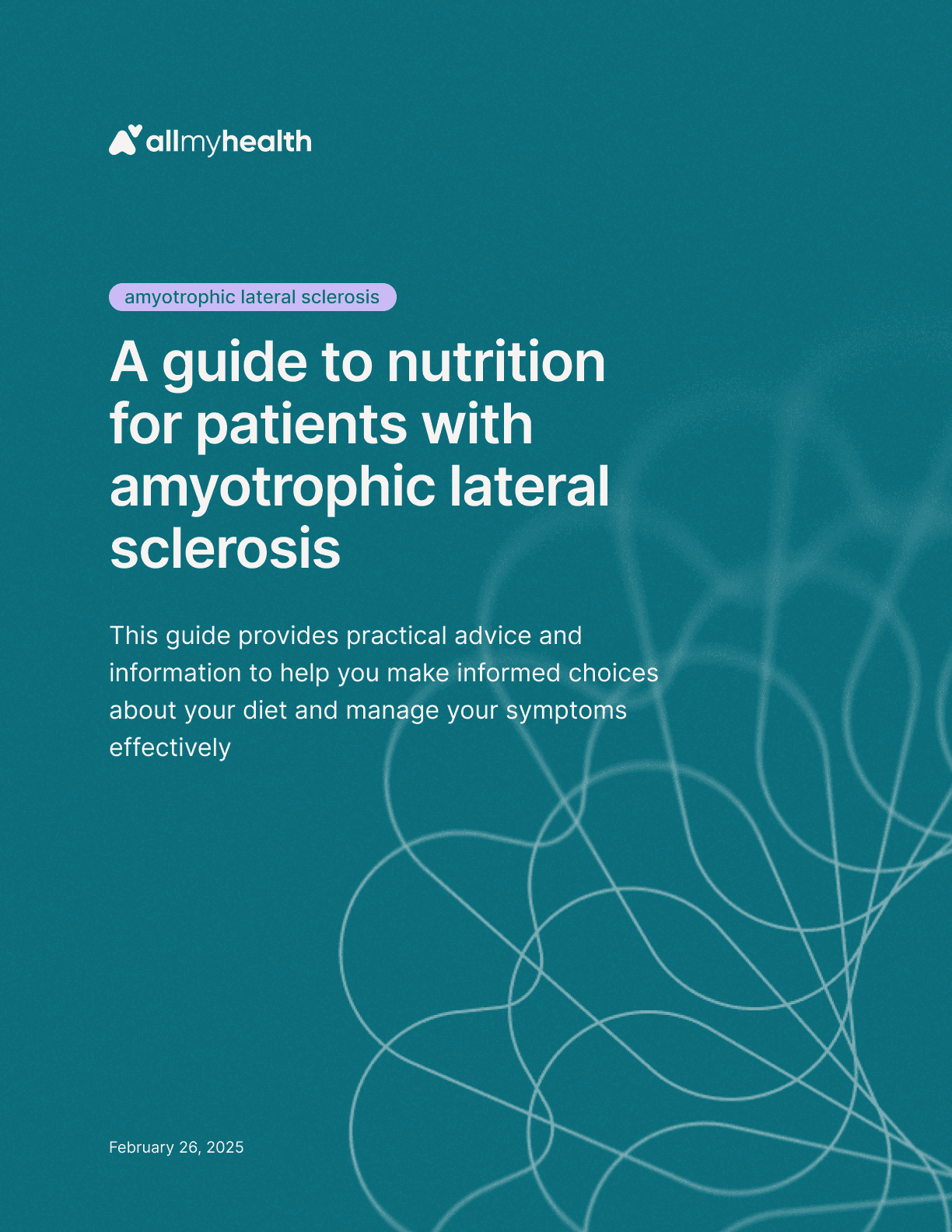
Amyotrophic lateral sclerosis
·
A guide to nutrition for patients with amyotrophic lateral sclerosis
Feb 26, 2025
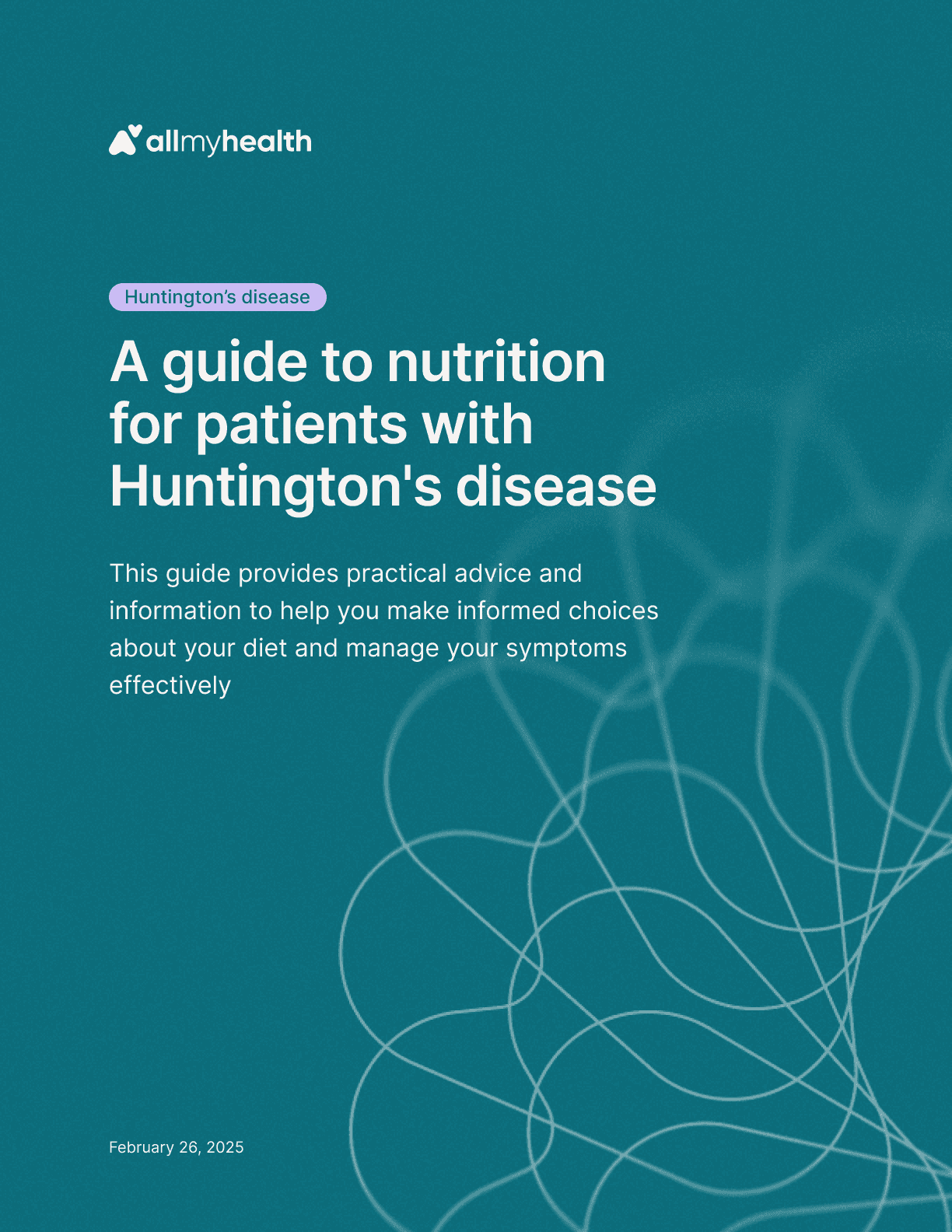
Huntington's disease
·
A guide to nutrition for patients with Huntington's disease
Feb 26, 2025

Spinal muscular atrophy
·
A guide to nutrition for patients with spinal muscular atrophy
Feb 26, 2025
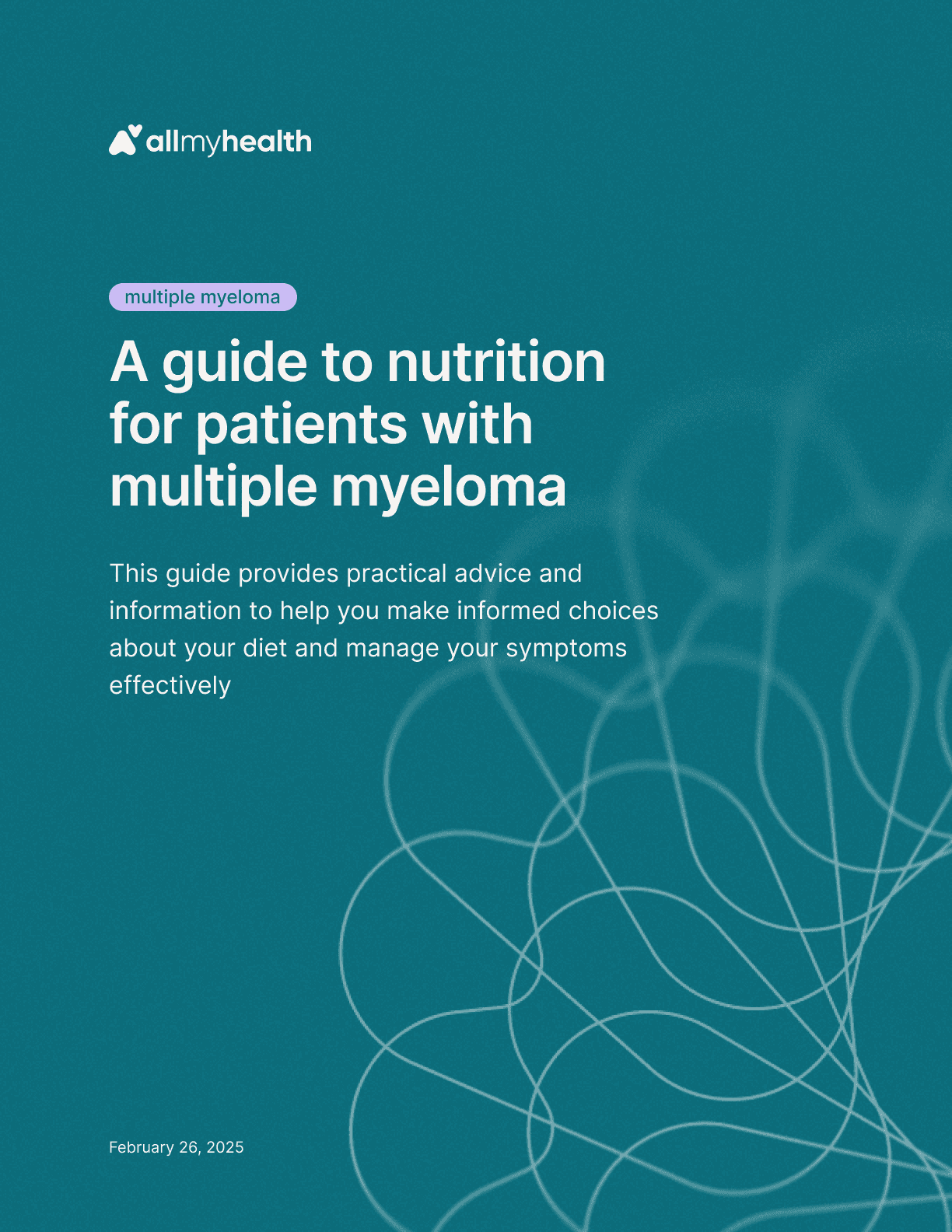
Multiple myeloma
·
A guide to nutrition for patients with multiple myeloma
Feb 26, 2025
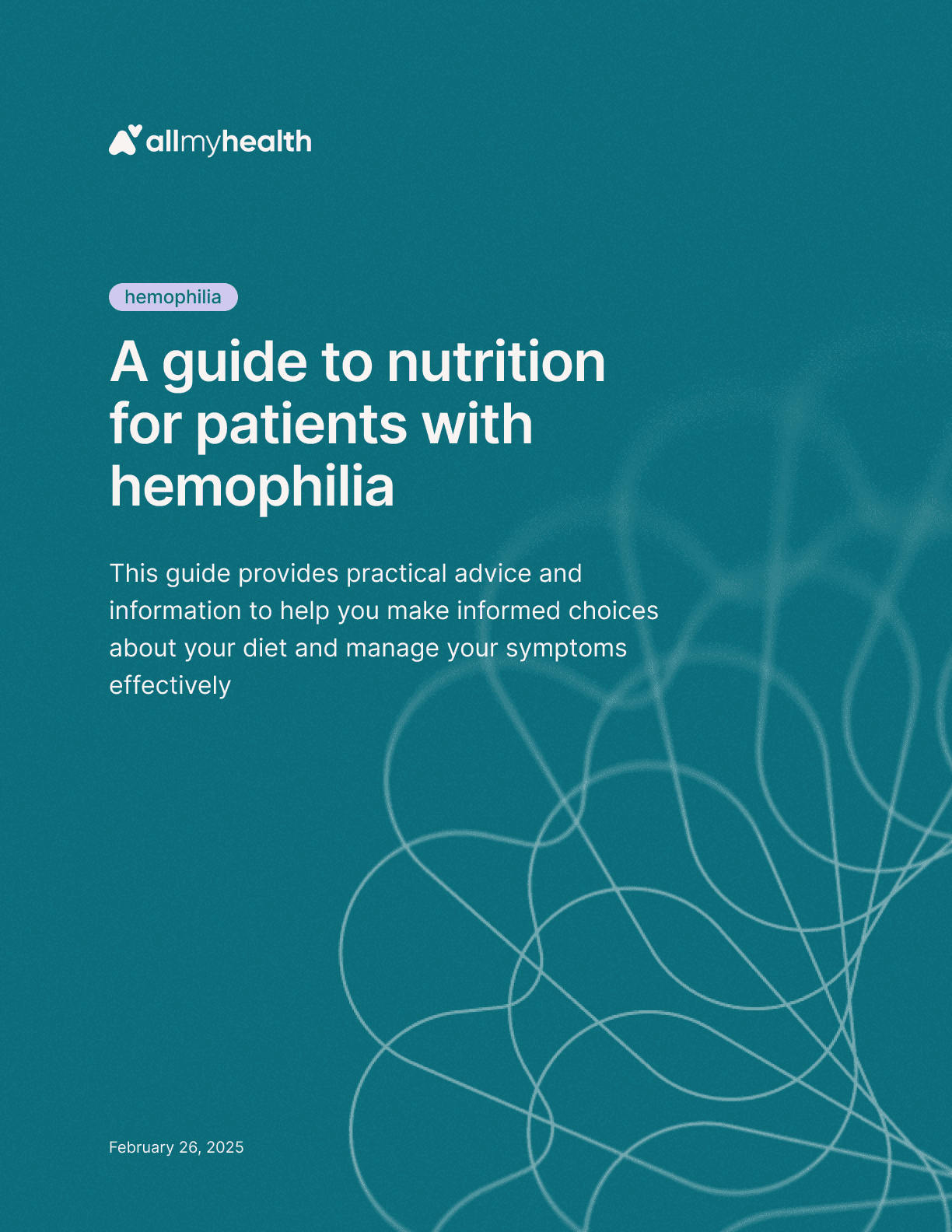
Hemophilia
·
A guide to nutrition for patients with hemophilia
Feb 26, 2025
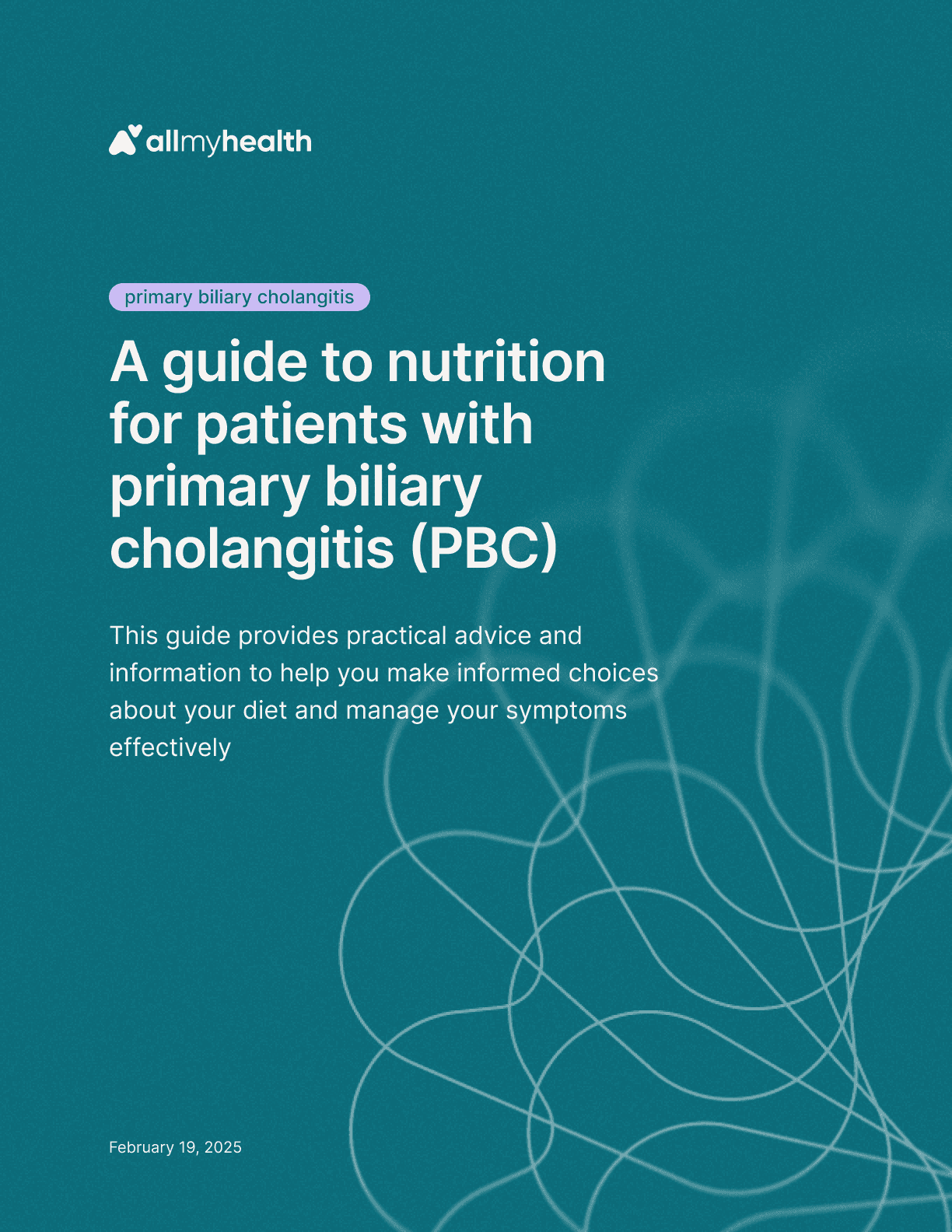
Primary biliary cholangitis
·
A guide to nutrition for patients with primary biliary cholangitis (PBC)
Feb 19, 2025
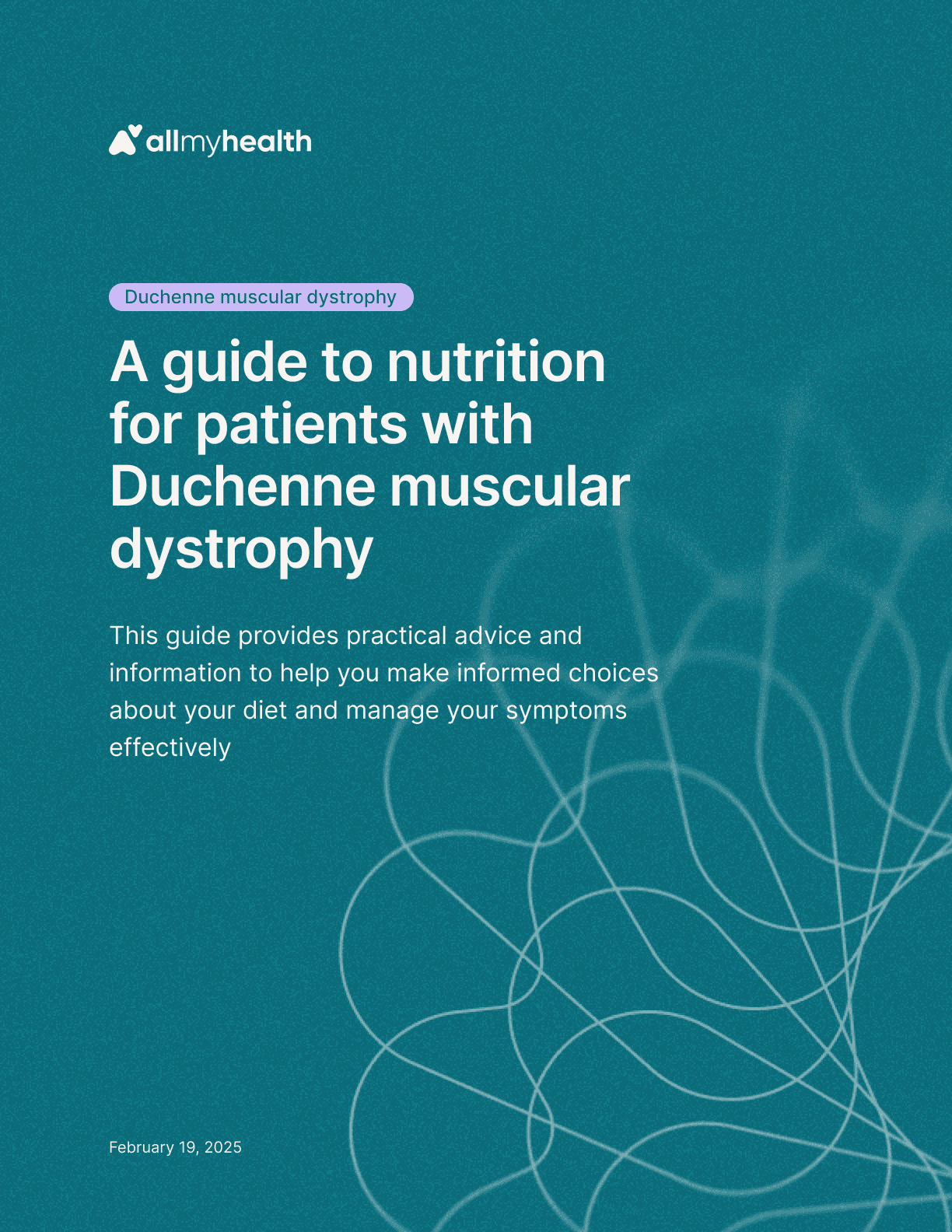
Duchenne muscular dystrophy
·
A guide to nutrition for patients with Duchenne muscular dystrophy
Feb 19, 2025
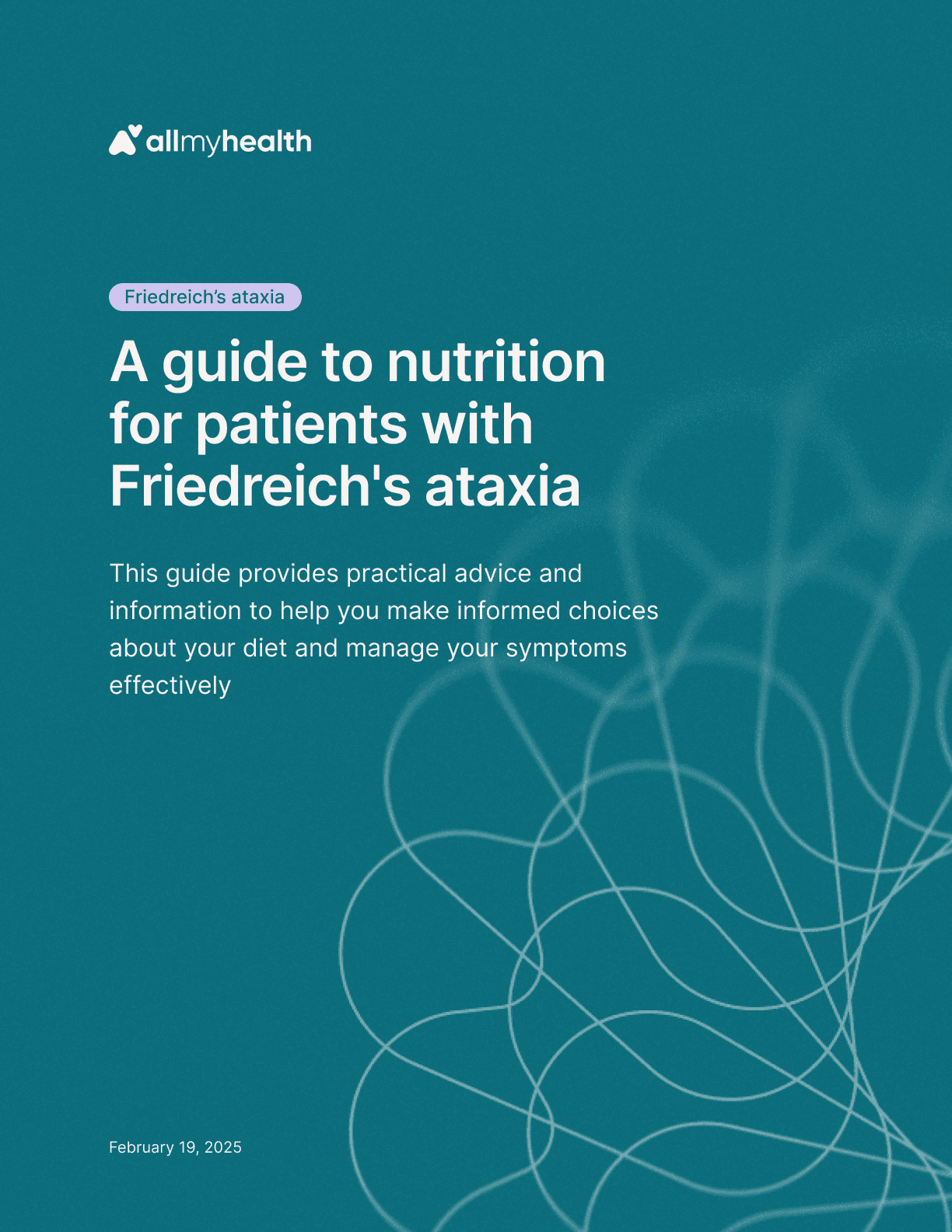
Friedreich's ataxia
·
A guide to nutrition for patients with Friedreich's ataxia
Feb 19, 2025
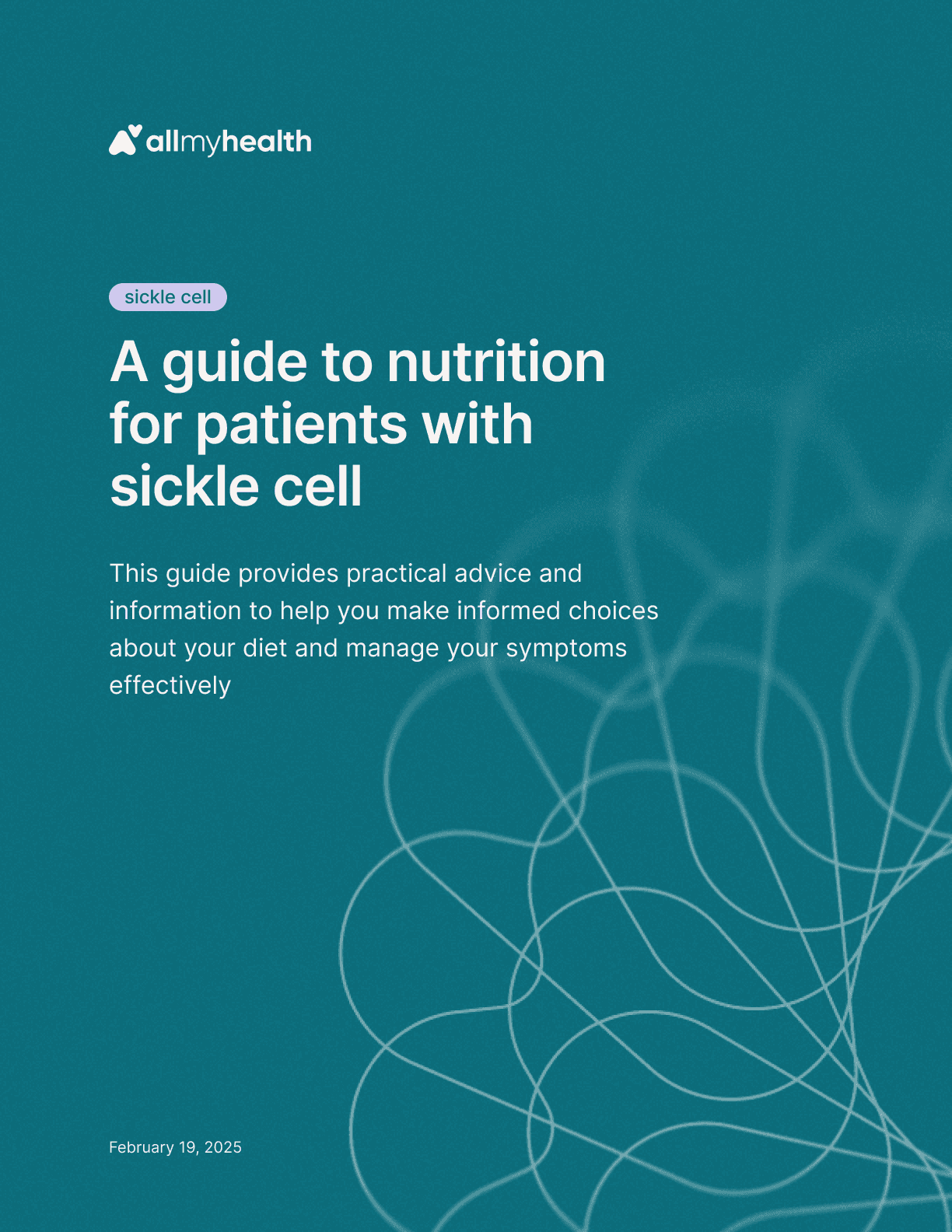
Sickle cell
·
A guide to nutrition for patients with sickle cell
Feb 19, 2025

Mantle cell lymphoma
·
A guide to nutrition for patients with mantle cell lymphoma
Feb 19, 2025
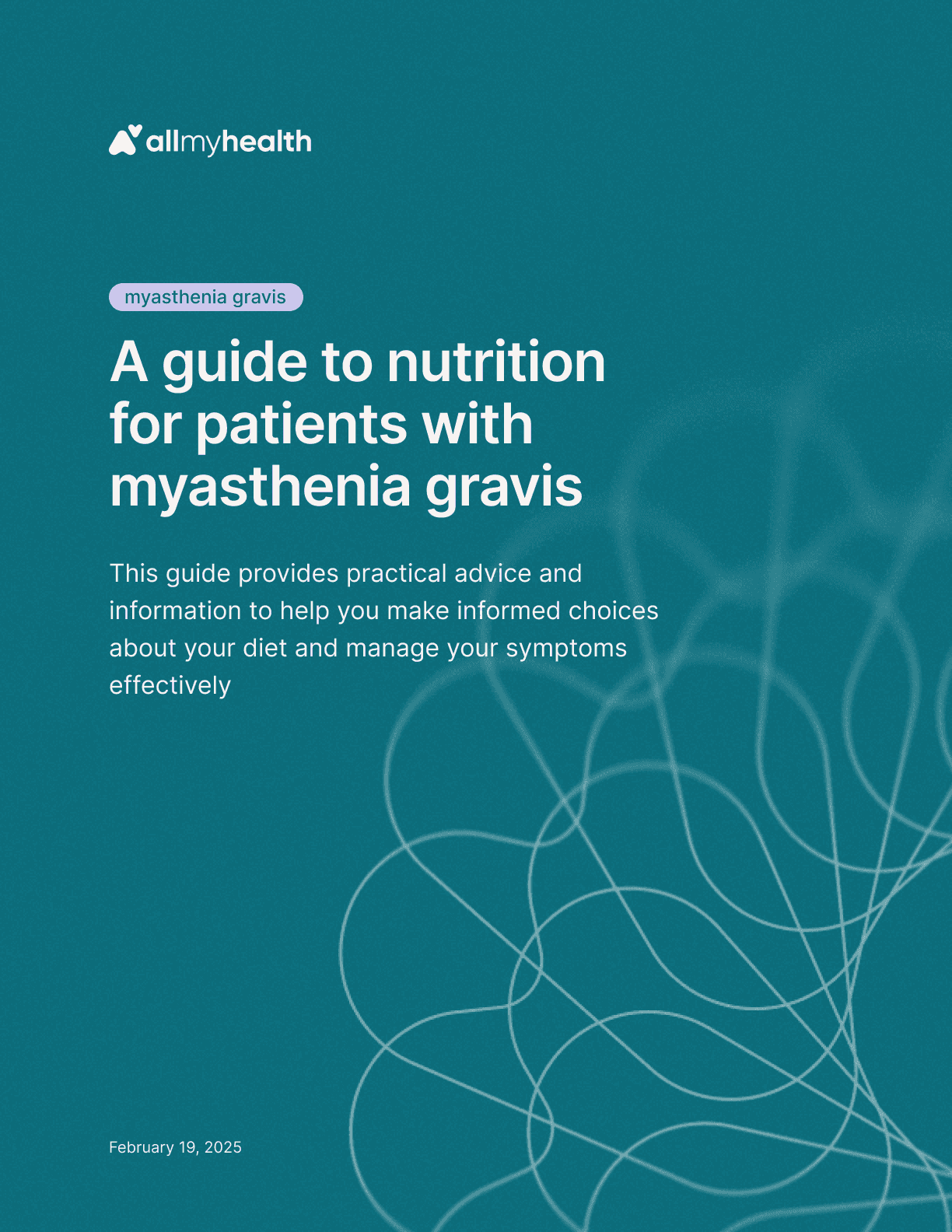
Myasthenia gravis
·
A guide to nutrition for patients with myasthenia gravis
Feb 19, 2025
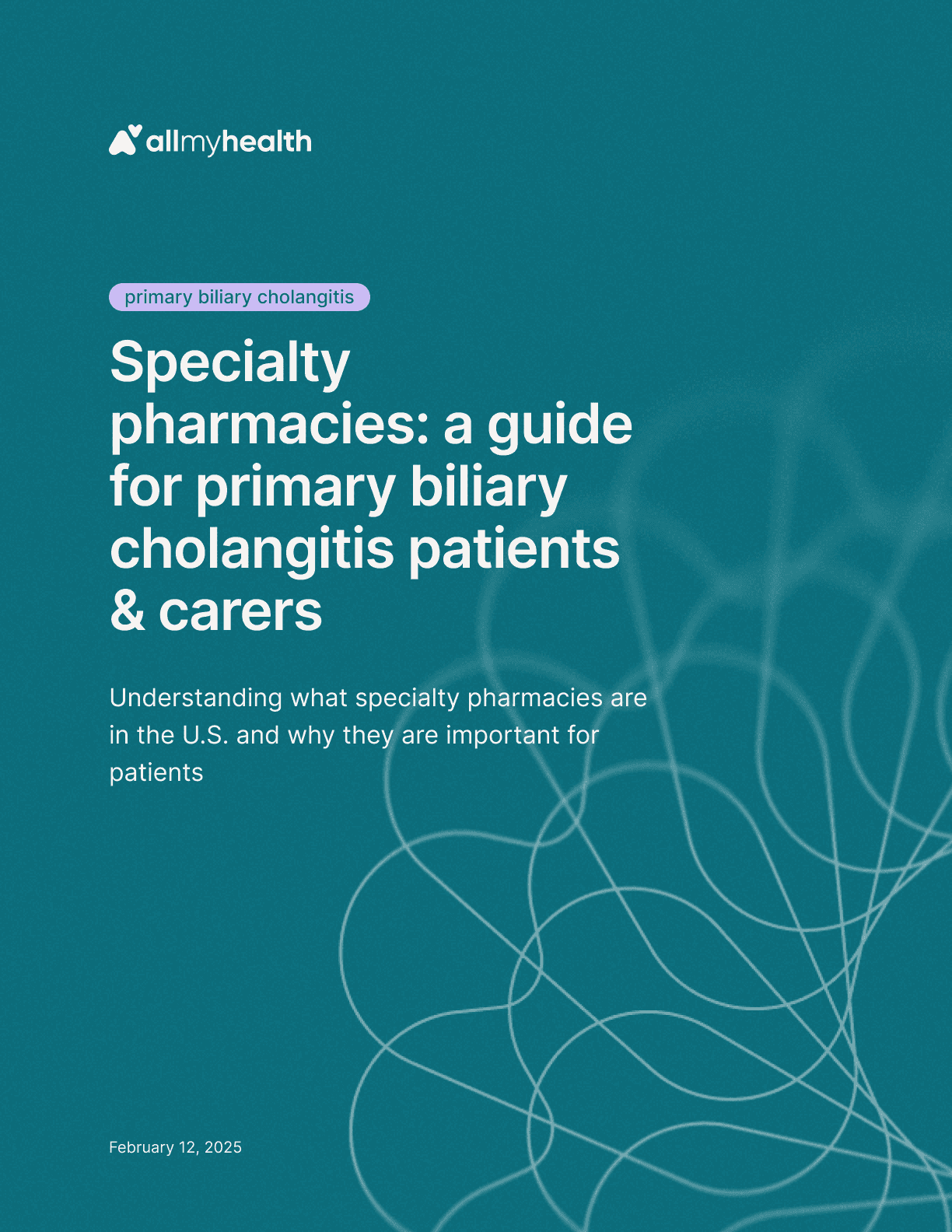
Primary biliary cholangitis
·
Specialty pharmacies: a guide for primary biliary cholangitis patients & carers
Feb 12, 2025
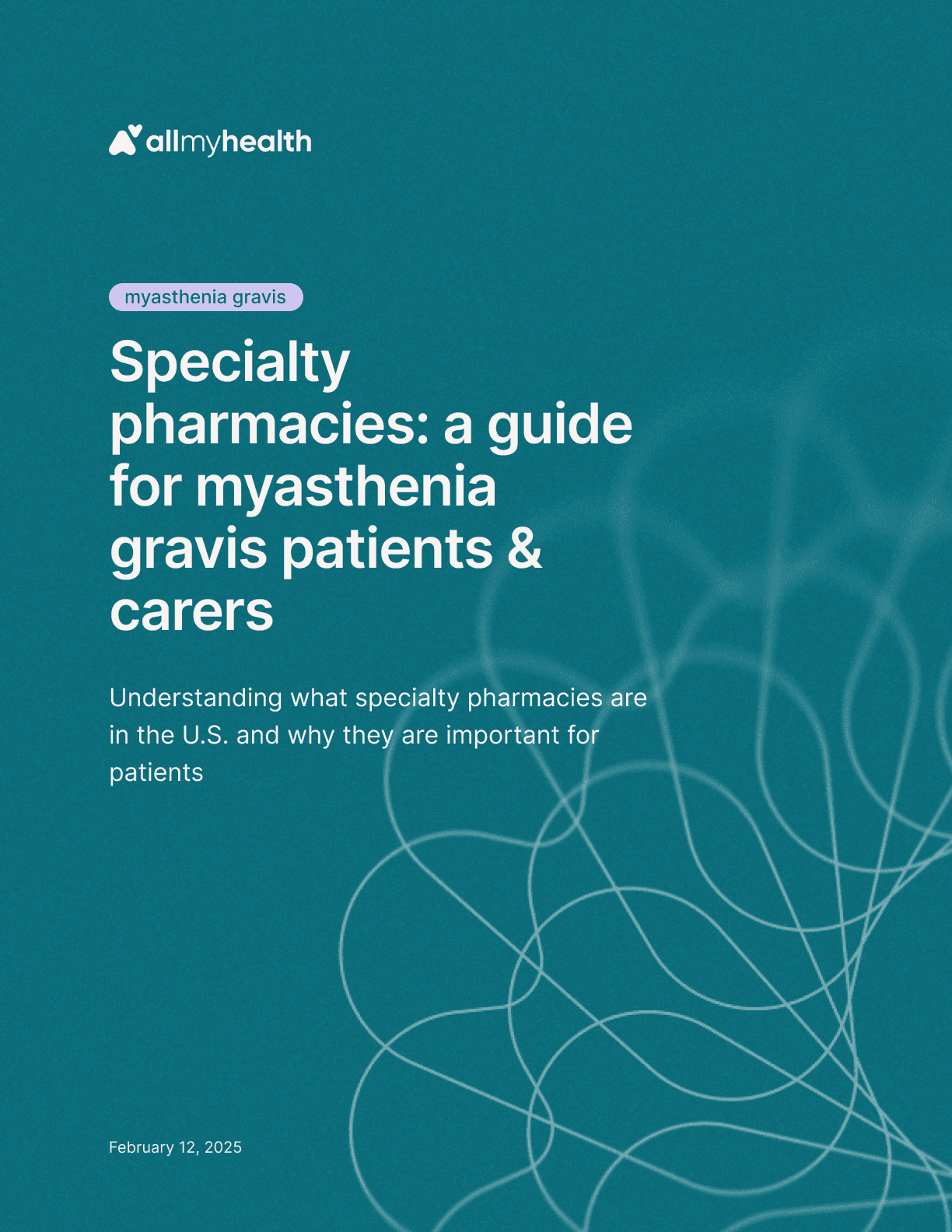
Myasthenia gravis
·
Specialty pharmacies: a guide for myasthenia gravis patients & carers
Feb 12, 2025
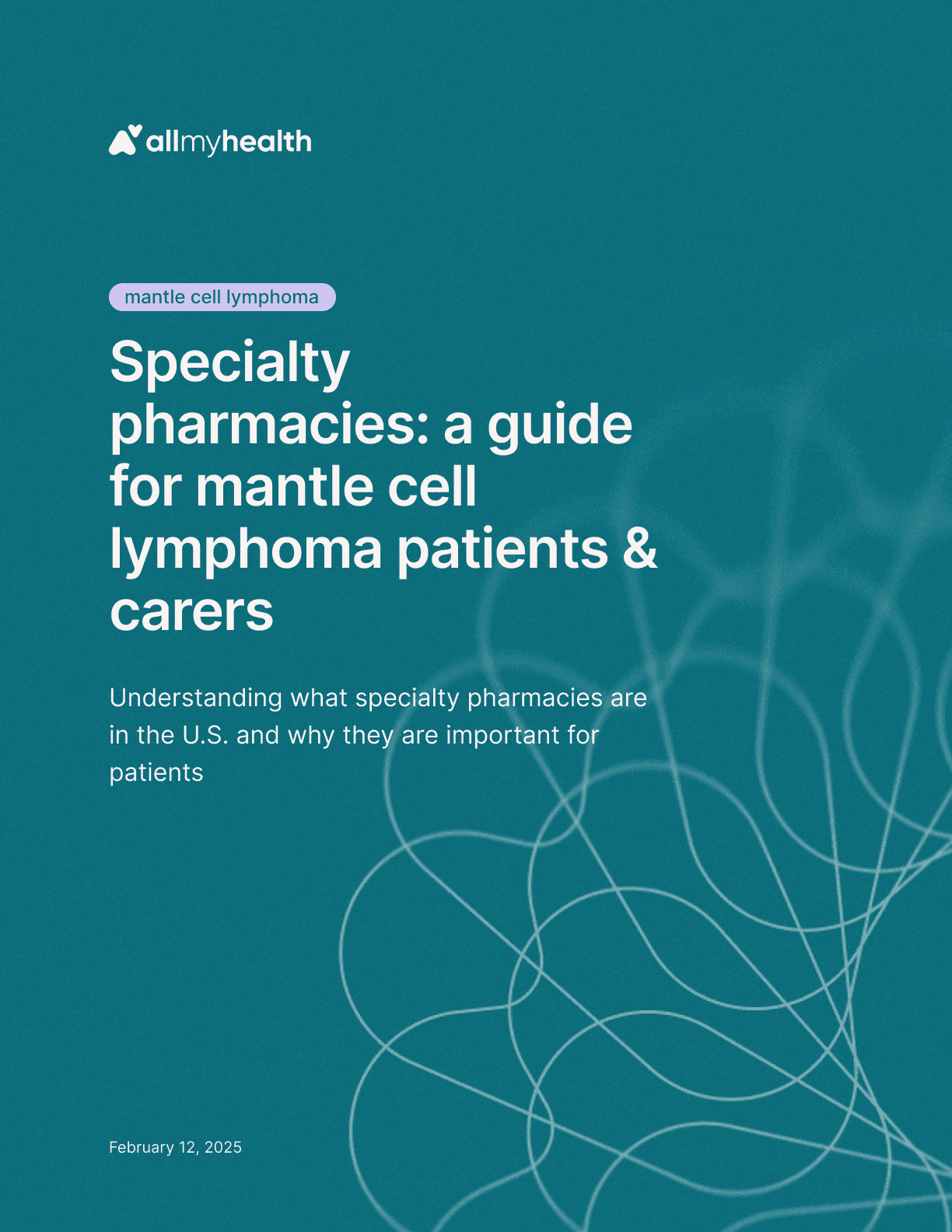
Mantle cell lymphoma
·
Specialty pharmacies: a guide for mantle cell lymphoma patients & carers
Feb 12, 2025
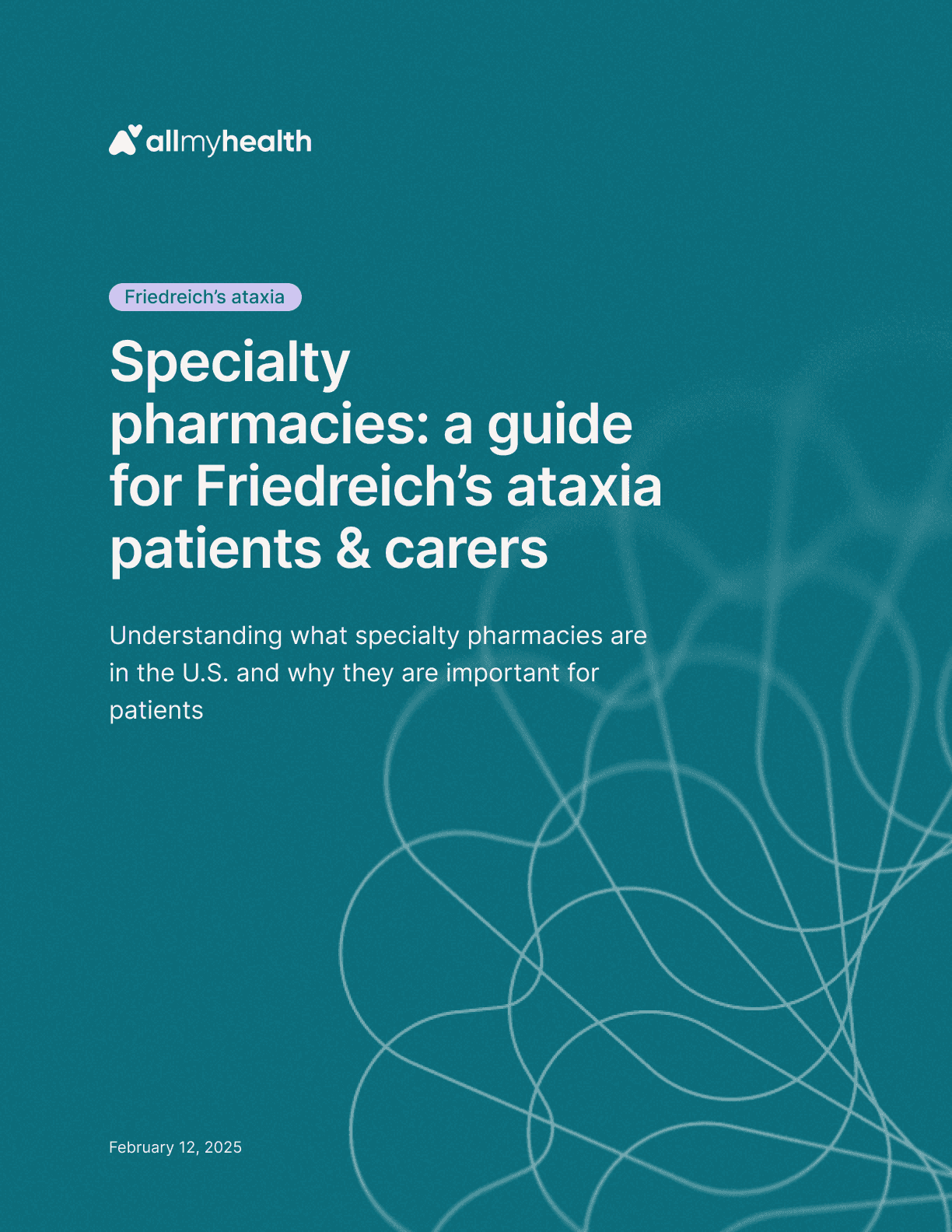
Friedreich's ataxia
·
Specialty pharmacies: a guide for Friedreich’s ataxia patients & carers
Feb 12, 2025
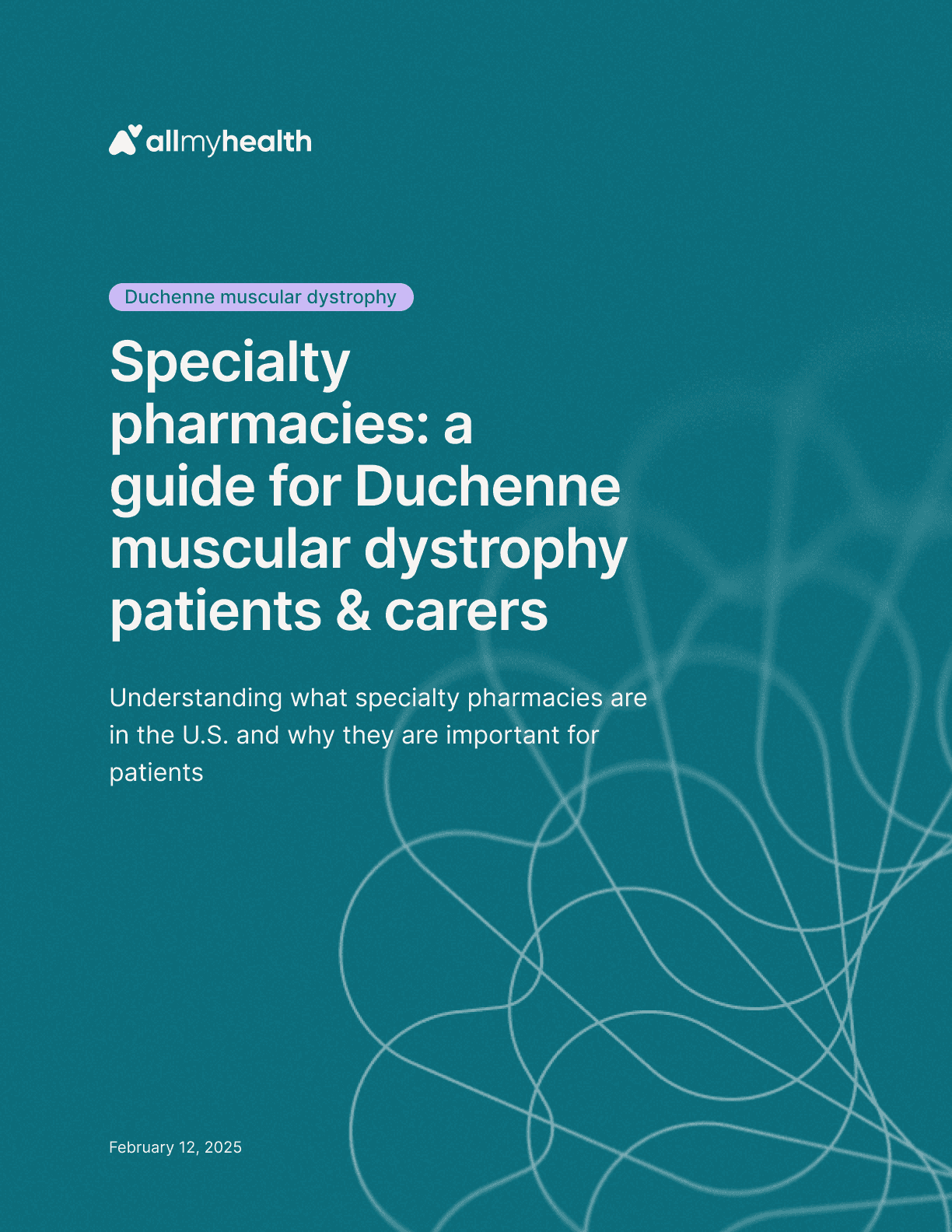
Duchenne muscular dystrophy
·
Specialty pharmacies: a guide for Duchenne muscular dystrophy patients & carers
Feb 12, 2025

Spinal muscular atrophy
·
Specialty pharmacies: a guide for SMA patients & carers
Feb 6, 2025
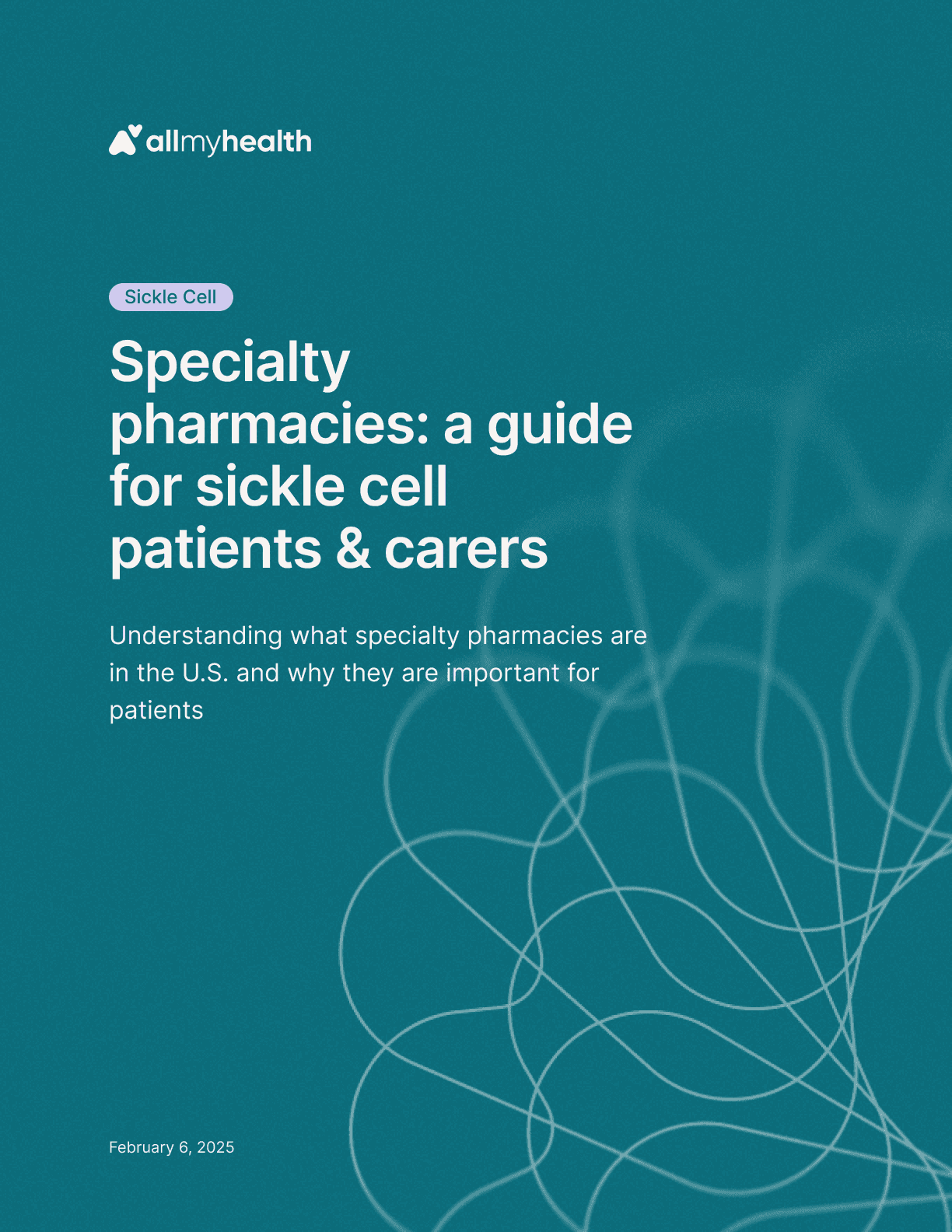
Sickle cell
·
Specialty pharmacies: a guide for sickle cell patients & carers
Feb 6, 2025
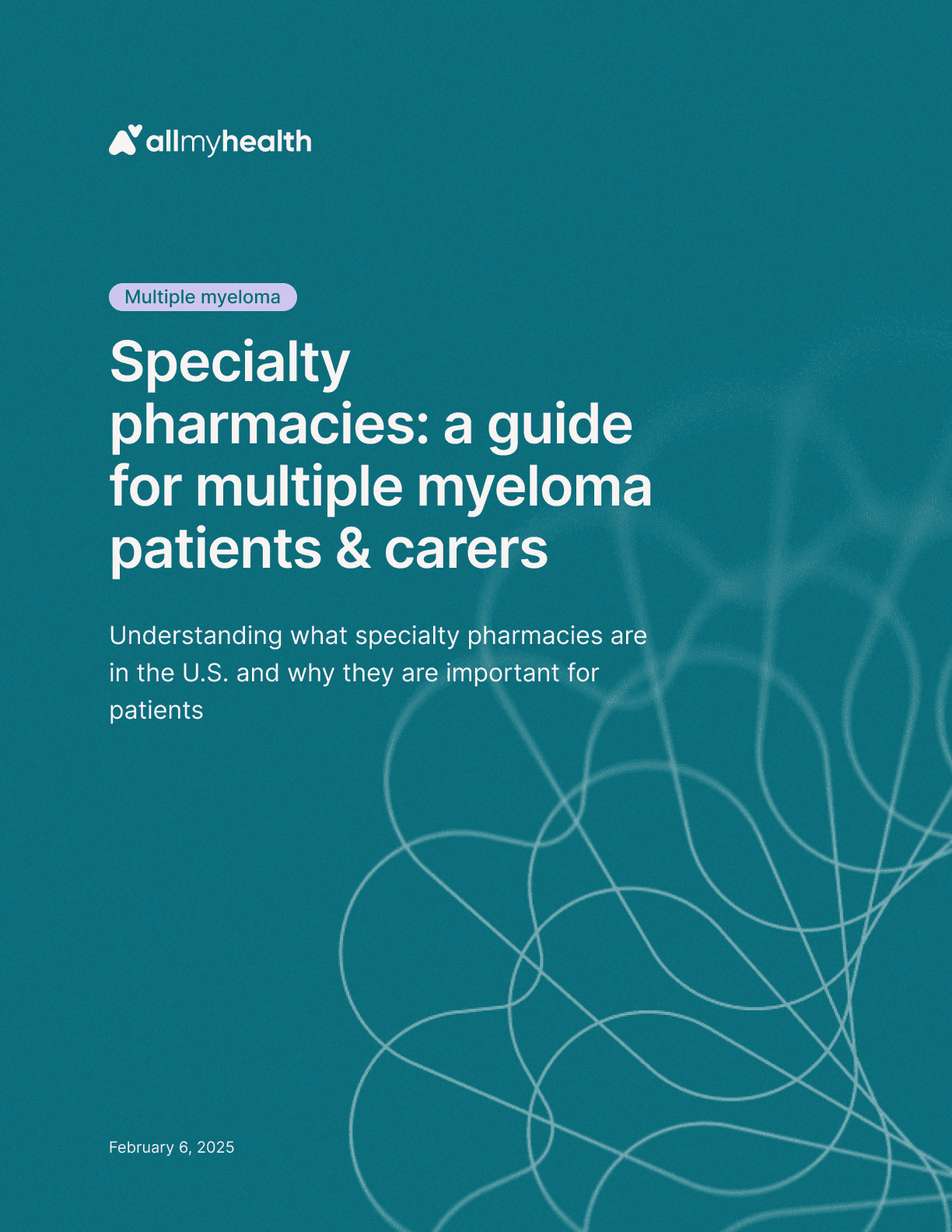
Multiple myeloma
·
Specialty pharmacies: a guide for multiple myeloma patients & carers
Feb 6, 2025
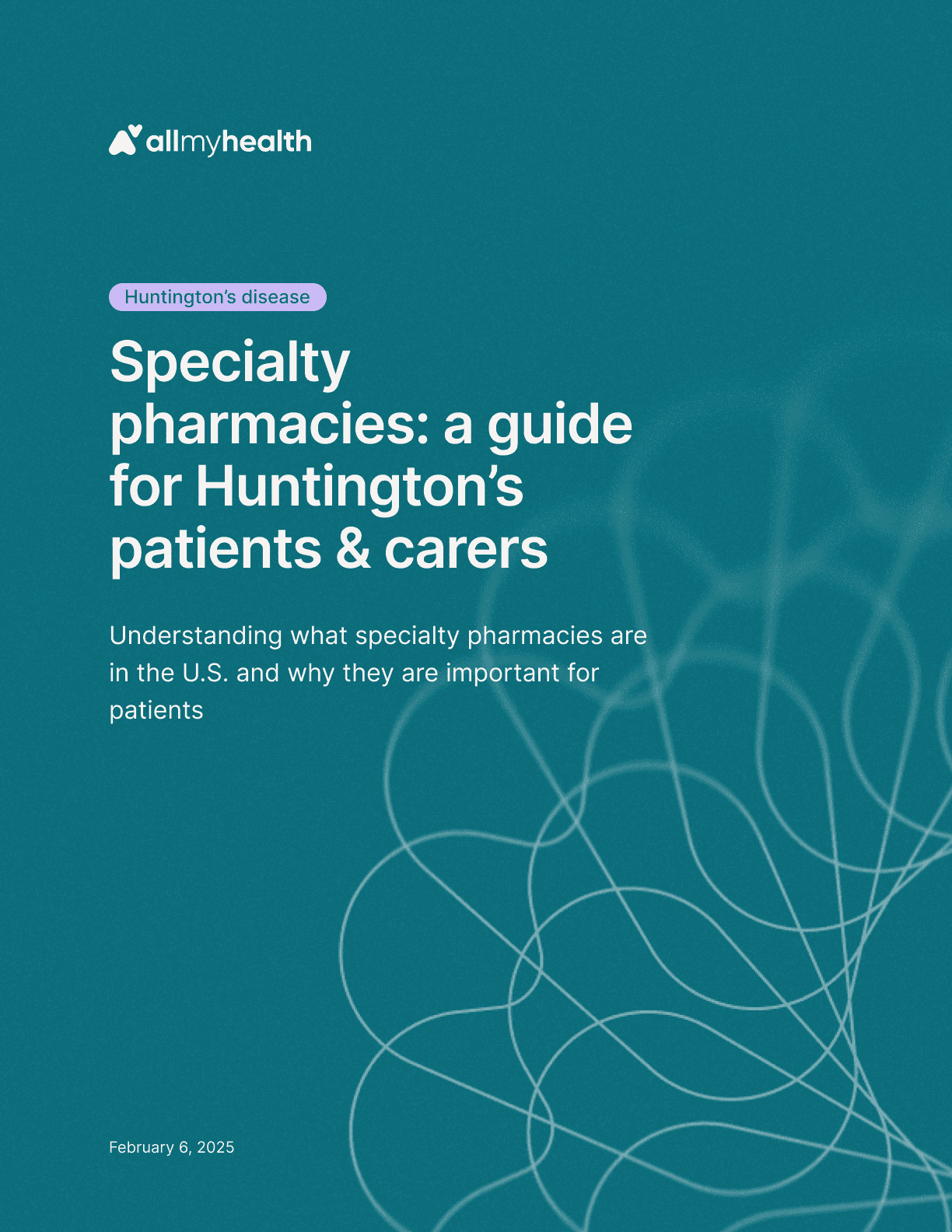
Huntington's disease
·
Specialty pharmacies: a guide for Huntington’s disease patients & carers
Feb 6, 2025
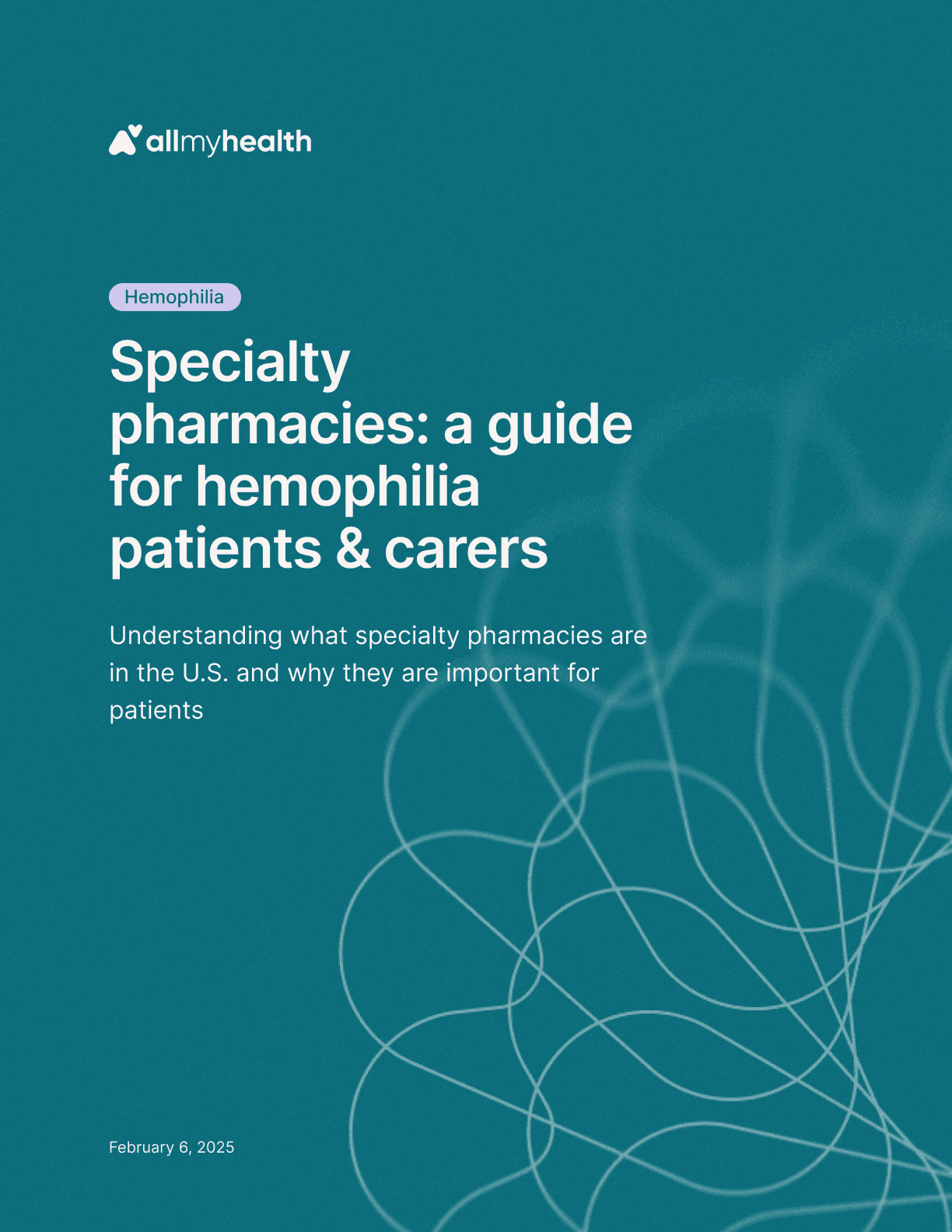
Hemophilia
·
Specialty pharmacies: a guide for hemophilia patients & carers
Feb 6, 2025

Amyotrophic lateral sclerosis
·
Specialty pharmacies: a guide for ALS patients & carers
Feb 6, 2025
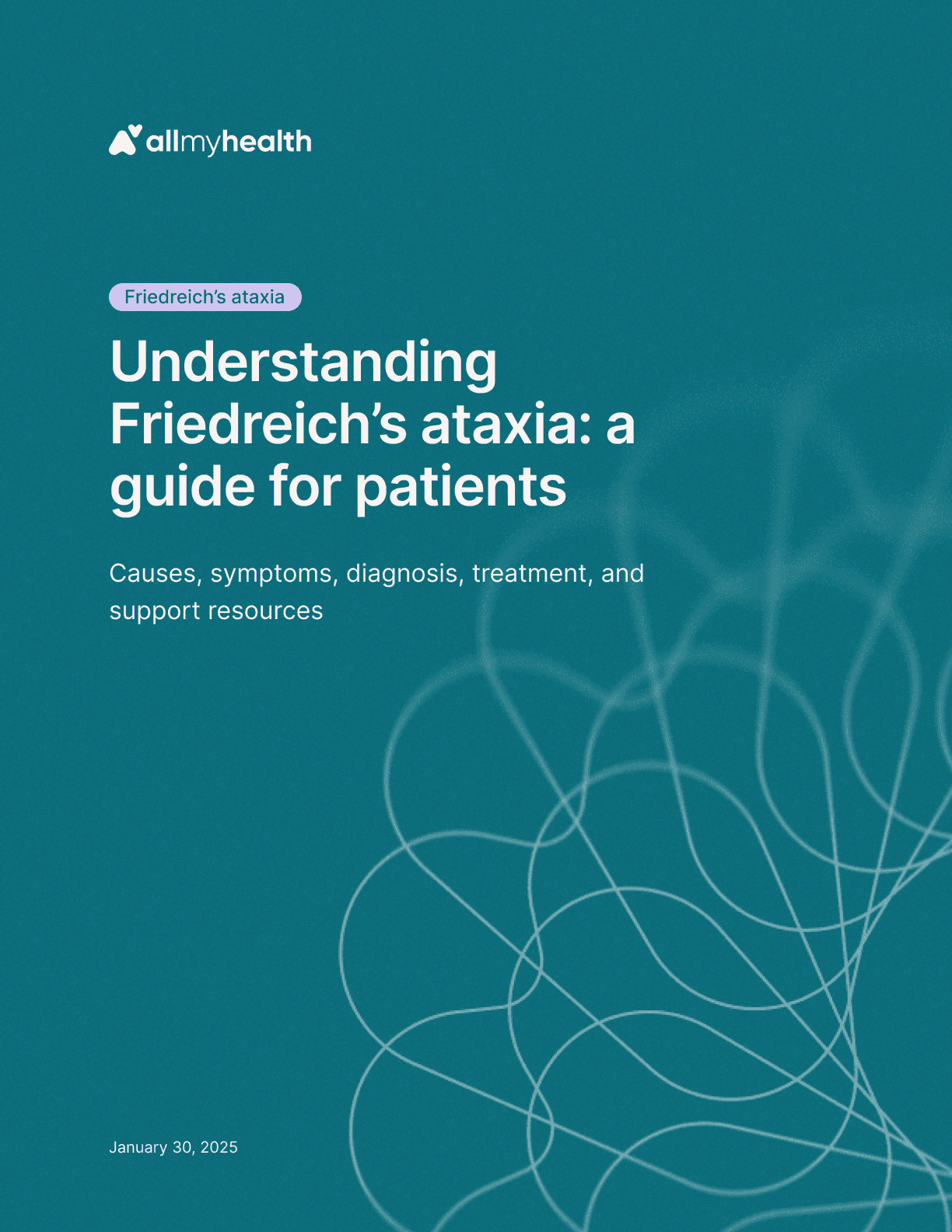
Friedreich's ataxia
·
Understanding Friedreich's ataxia: a guide for patients
Jan 30, 2025

Hemophilia
·
Understanding hemophilia: a guide for patients
Jan 30, 2025
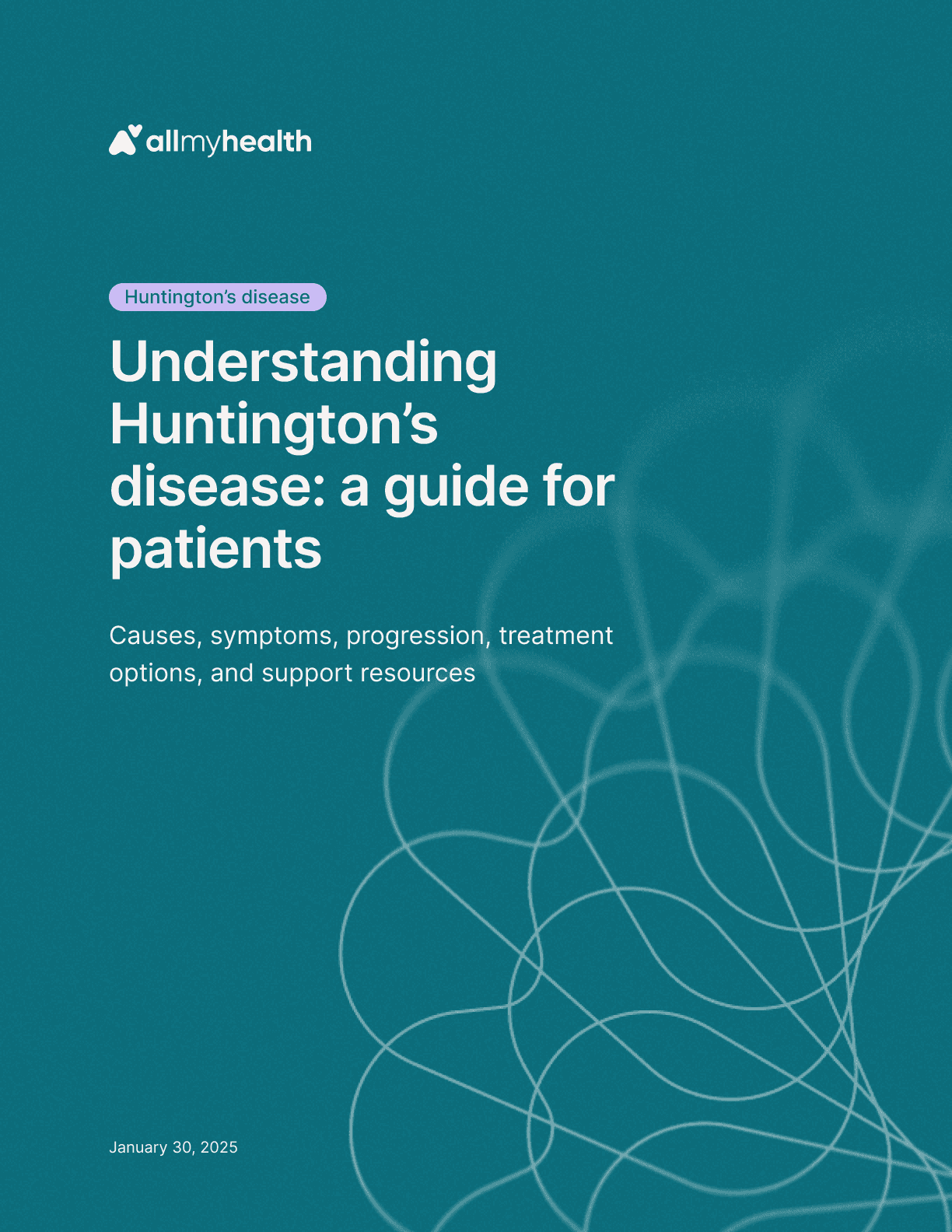
Huntington's disease
·
Understanding Huntington’s disease: a guide for patients
Jan 30, 2025
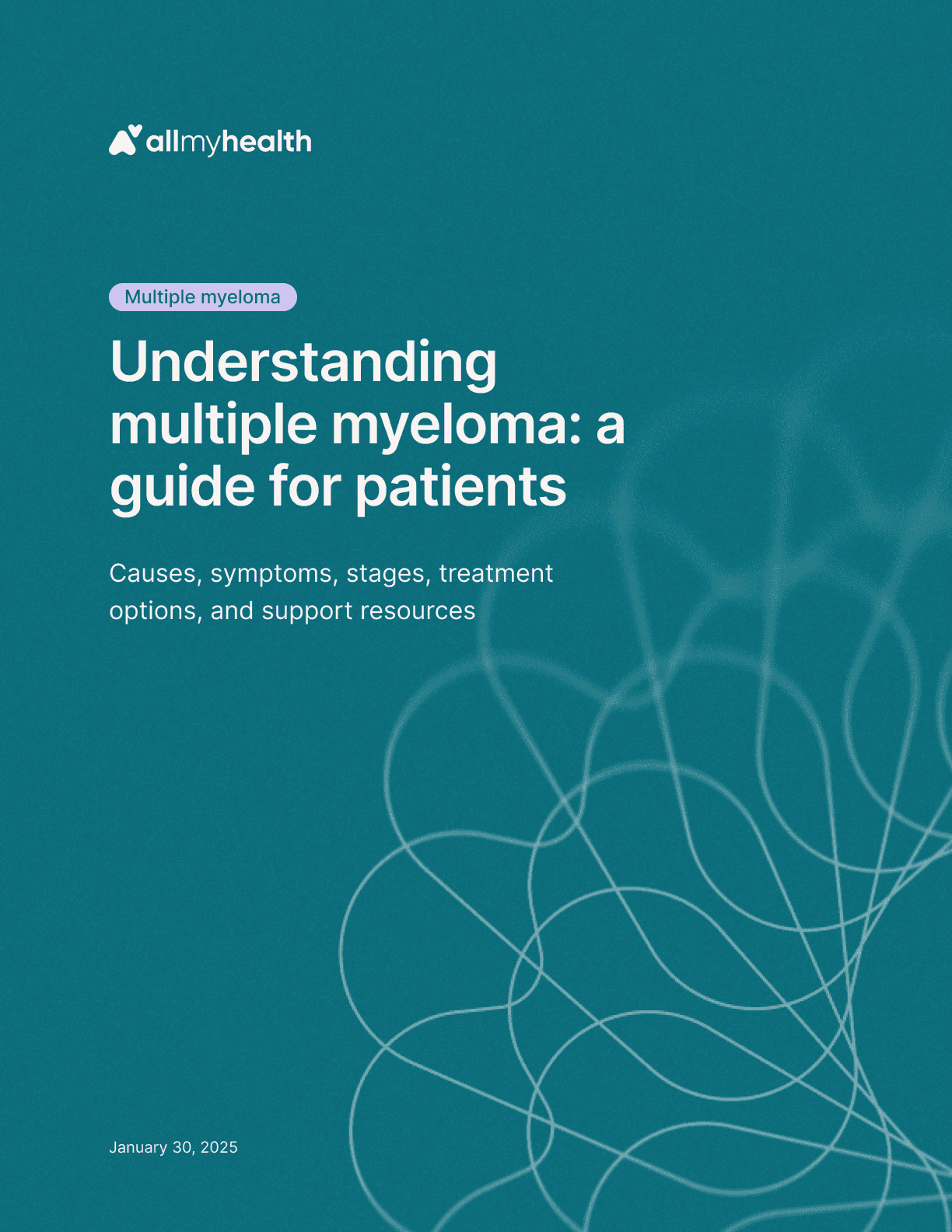
Multiple myeloma
·
Understanding multiple myeloma: a guide for patients
Jan 30, 2025

Primary biliary cholangitis
·
Understanding primary biliary cholangitis: a guide for patients
Jan 30, 2025
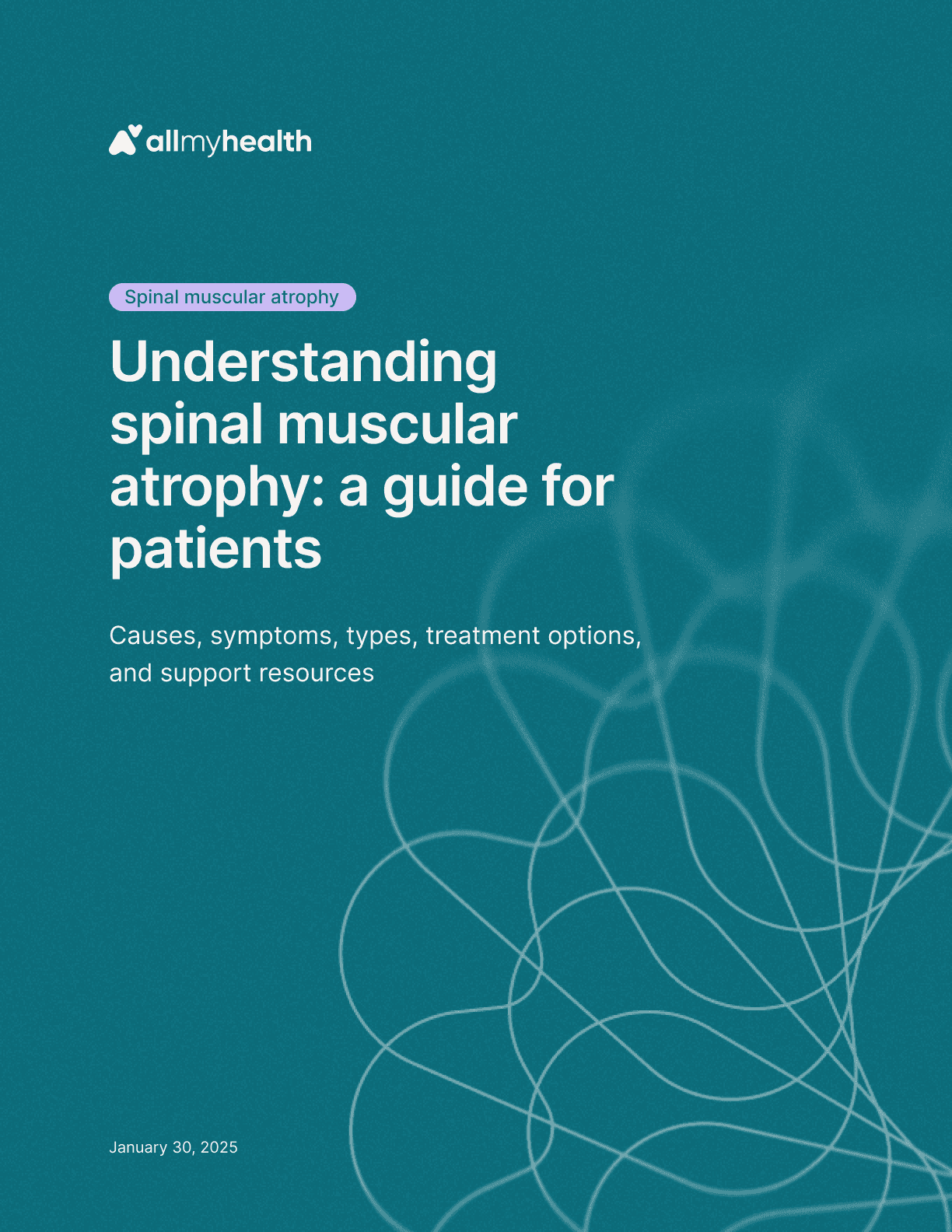
Spinal muscular atrophy
·
Understanding spinal muscular atrophy: a guide for patients
Jan 30, 2025

Amyotrophic lateral sclerosis
·
Understanding amyotrophic lateral sclerosis: a guide for patients
Jan 23, 2025
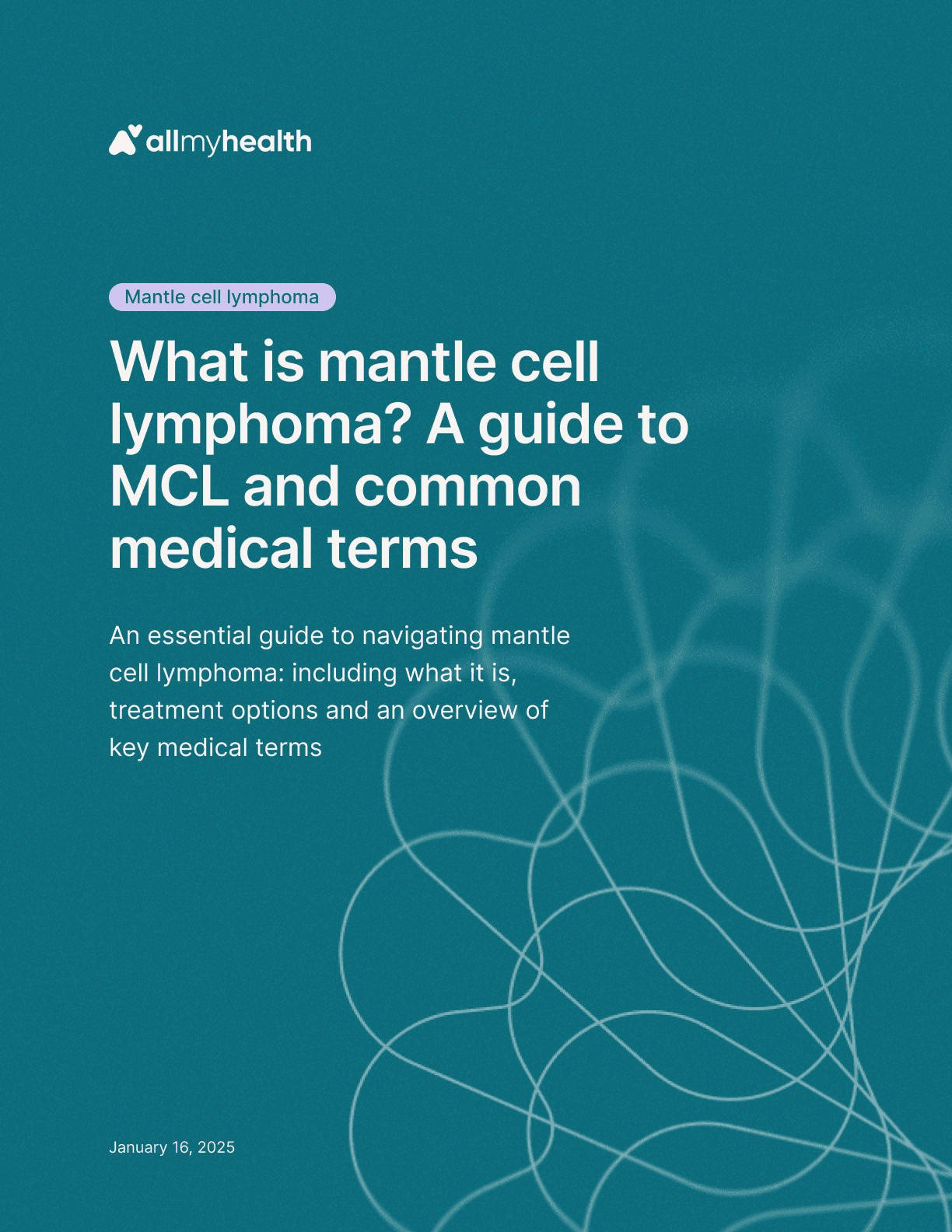
Mantle cell lymphoma
·
What is mantle cell lymphoma? A guide to MCL and common medical terms
Jan 23, 2025
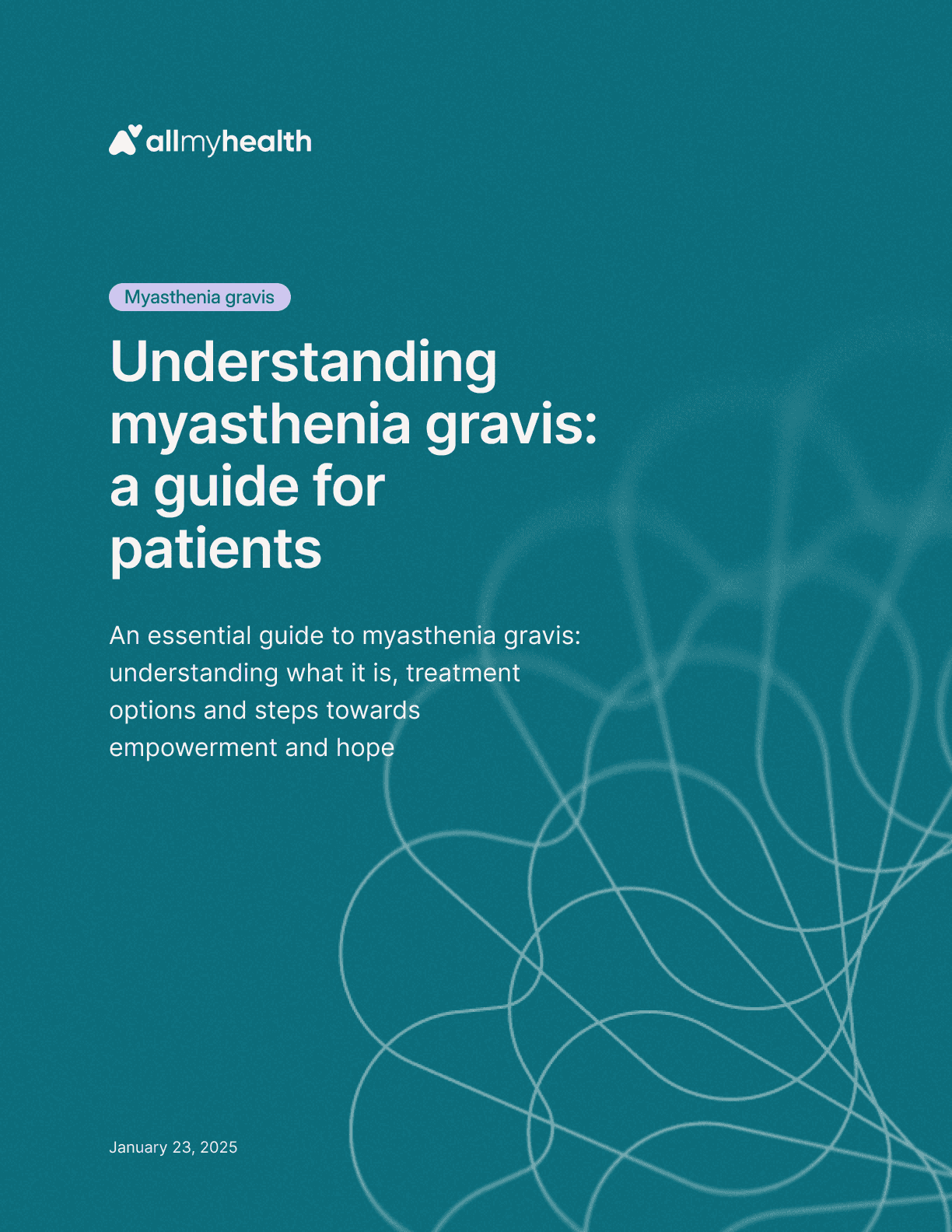
Myasthenia gravis
·
Understanding myasthenia gravis: a guide for patients
Jan 23, 2025
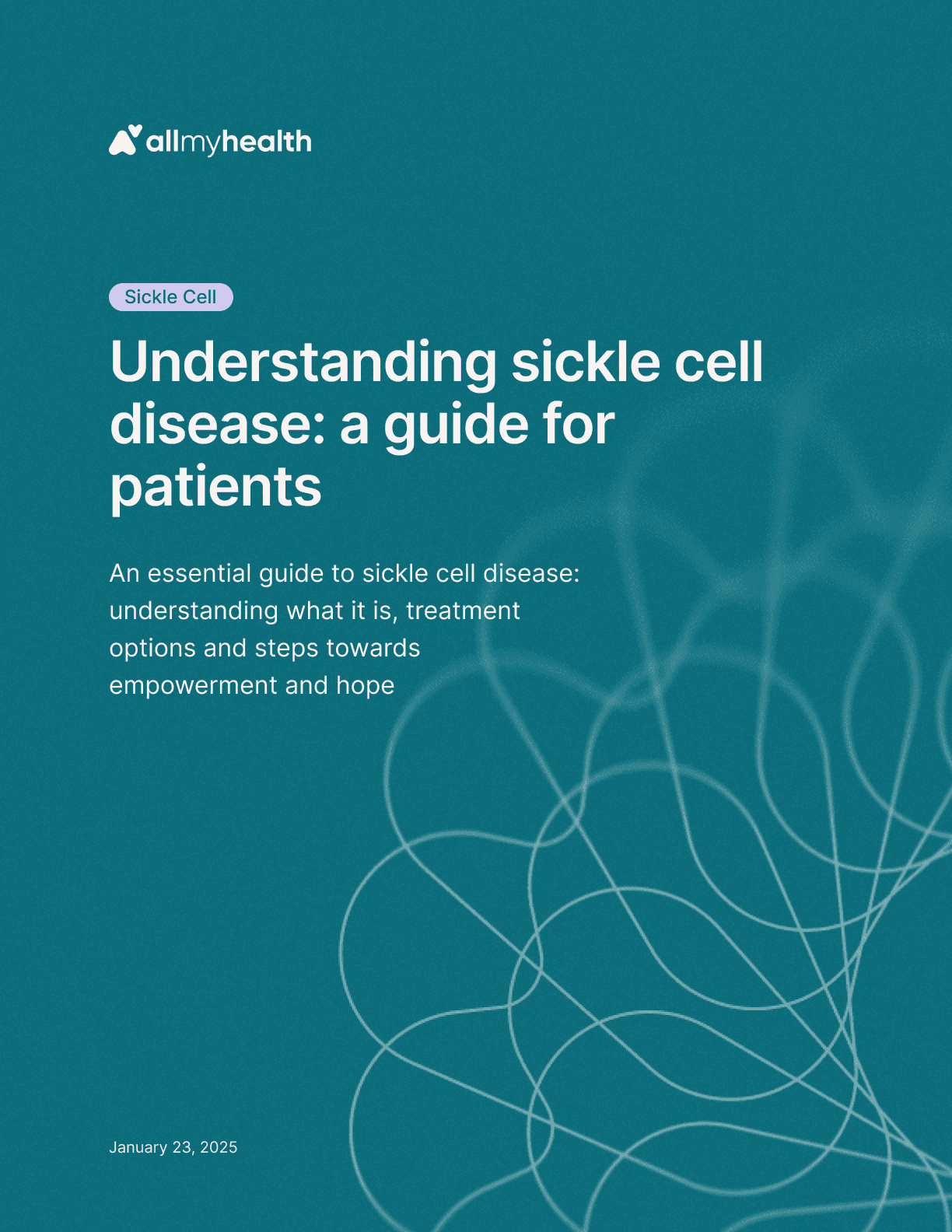
Sickle cell
·
Understanding sickle cell disease: a guide for patients
Jan 23, 2025
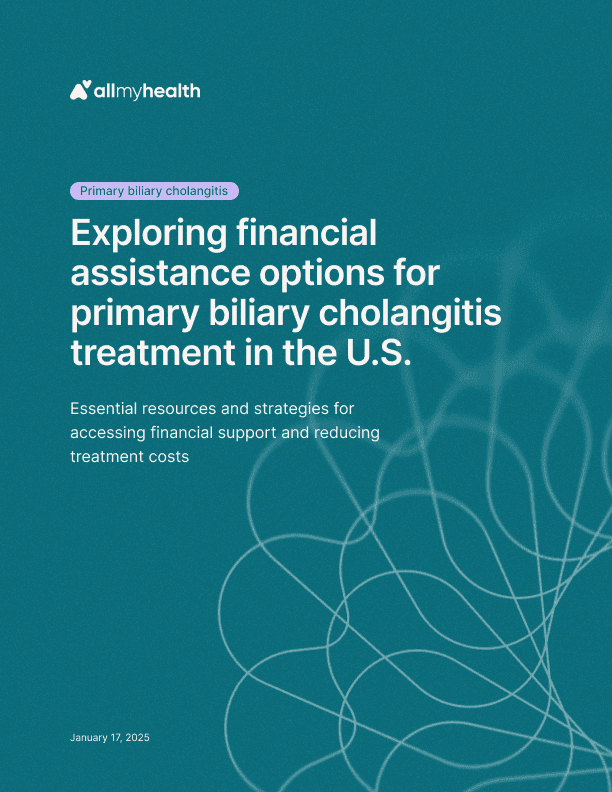
Primary biliary cholangitis
·
Exploring financial assistance options for primary biliary cholangitis treatment in the U.S.
Jan 17, 2025
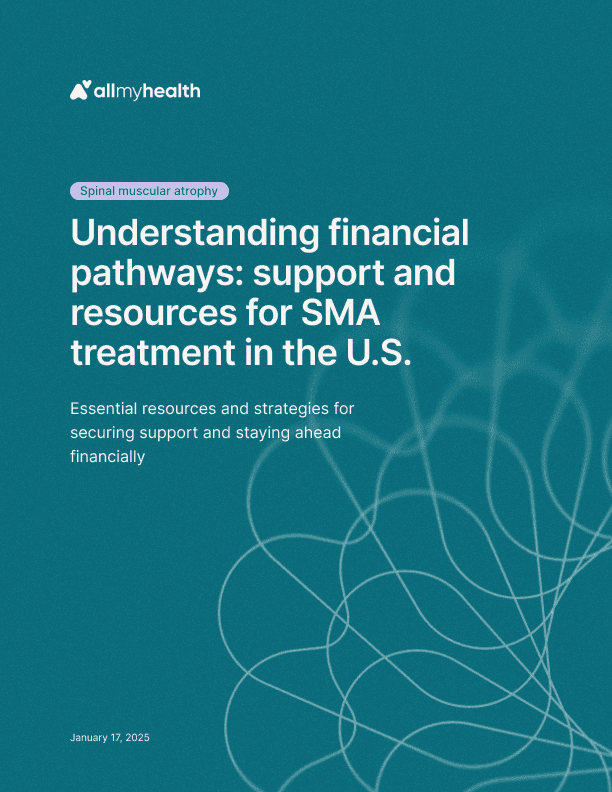
Spinal muscular atrophy
·
Understanding financial pathways: support and resources for SMA treatment in the U.S.
Jan 17, 2025
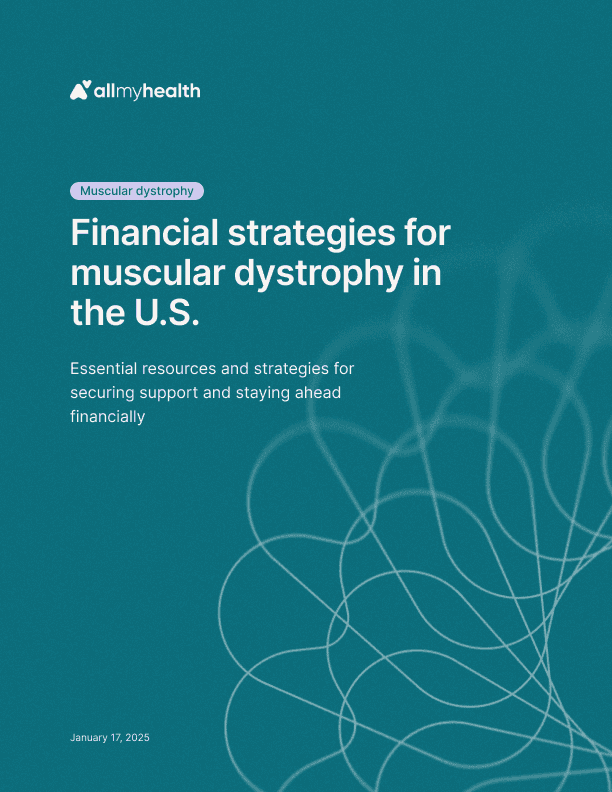
Duchenne muscular dystrophy
·
Financial strategies for muscular dystrophy in the U.S.
Jan 17, 2025

Hemophilia
·
Navigating financial assistance for hemophilia treatment in the U.S.
Jan 17, 2025
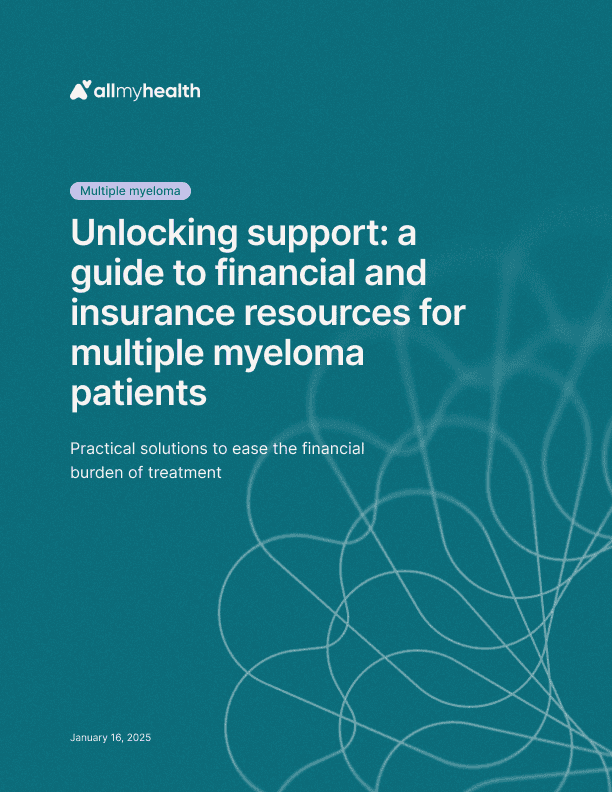
Multiple myeloma
·
Unlocking support: a guide to financial and insurance resources for multiple myeloma patients
Jan 17, 2025

Friedreich's ataxia
·
Navigating Friedreich’s ataxia in the U.S.: a practical guide to support and financial planning
Jan 17, 2025
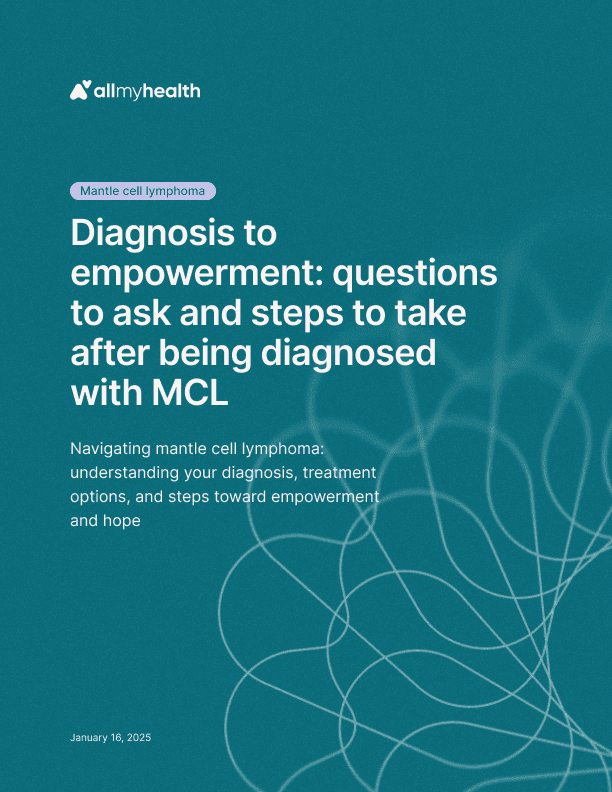
Mantle cell lymphoma
·
Diagnosis to empowerment: questions to ask and steps to take after being diagnosed with MCL
Jan 16, 2025
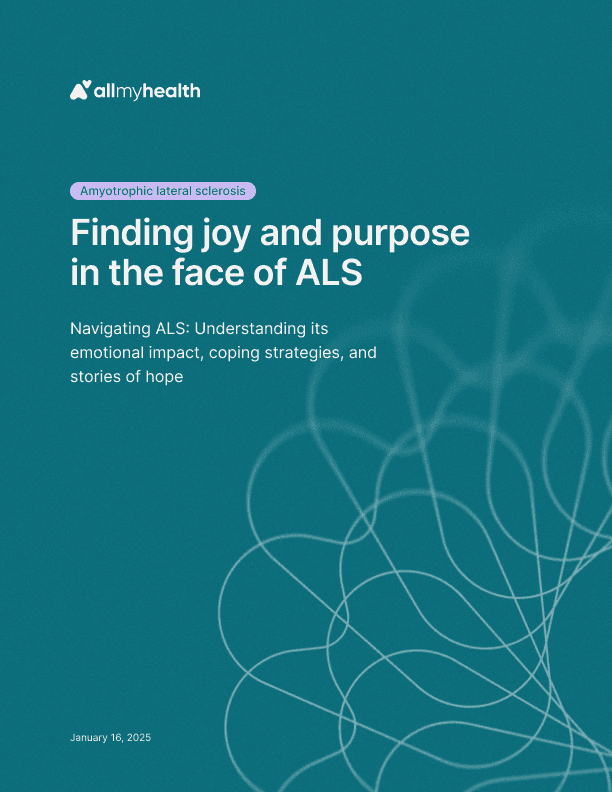
Amyotrophic lateral sclerosis
·
Finding joy and purpose in the face of ALS
Jan 16, 2025
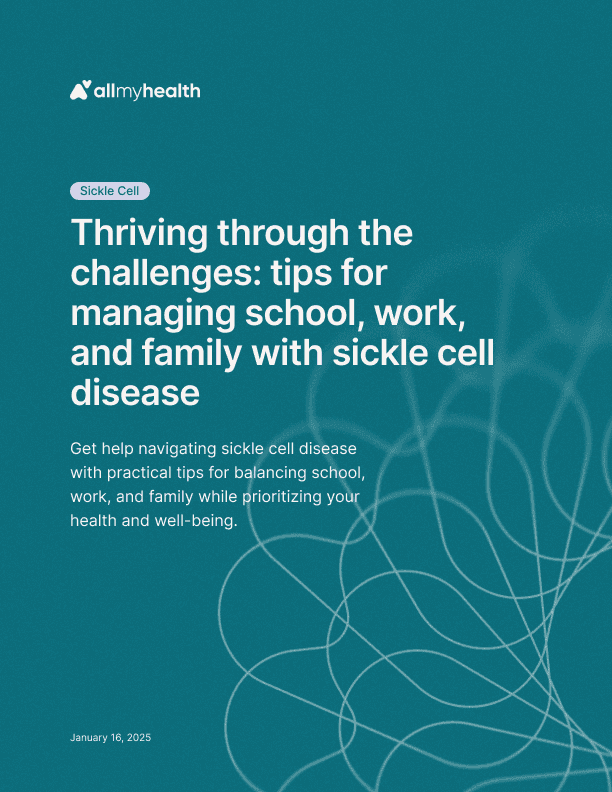
Sickle cell
·
Thriving through the challenges: tips for managing school, work, and family with sickle cell disease
Jan 16, 2025
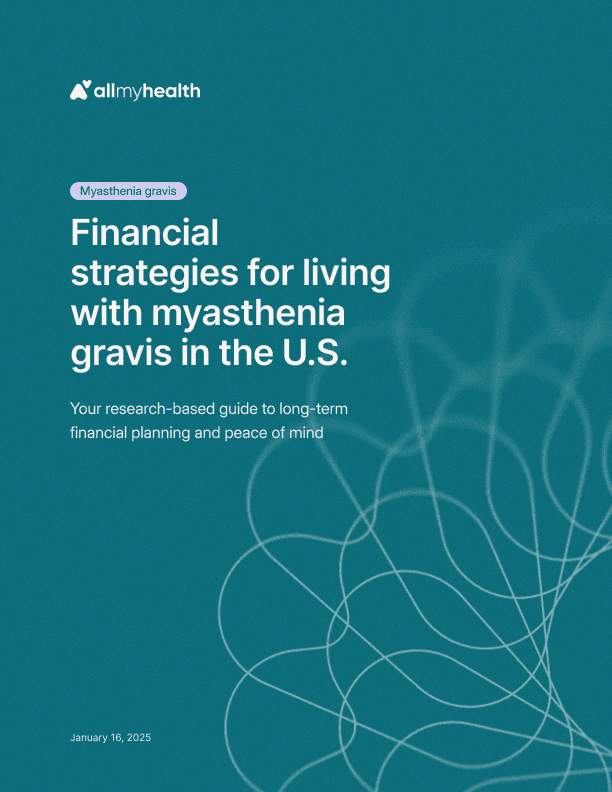
Myasthenia gravis
·
Financial strategies for living with myasthenia gravis in the U.S.: a guide to long-term planning
Jan 16, 2025